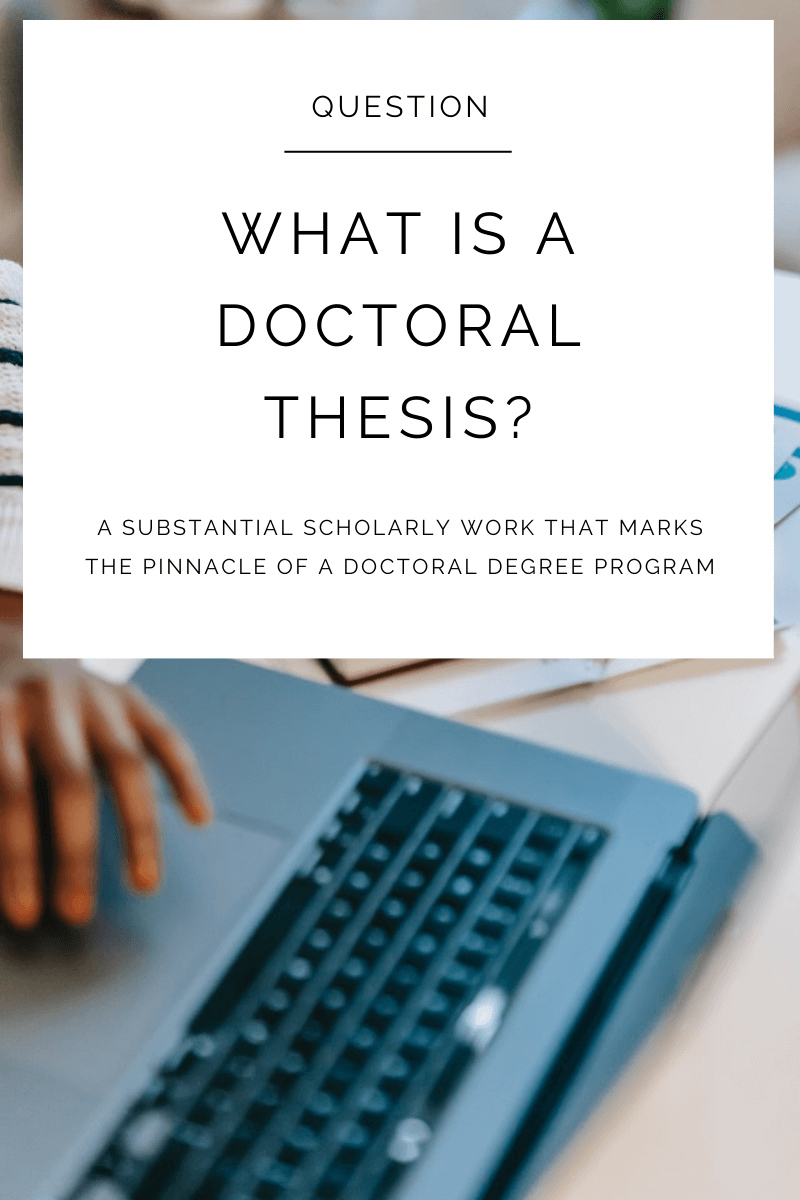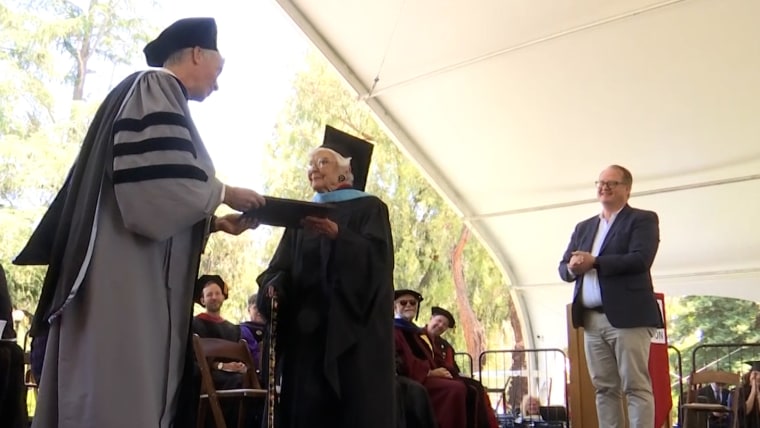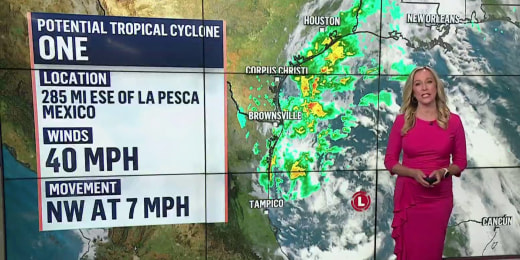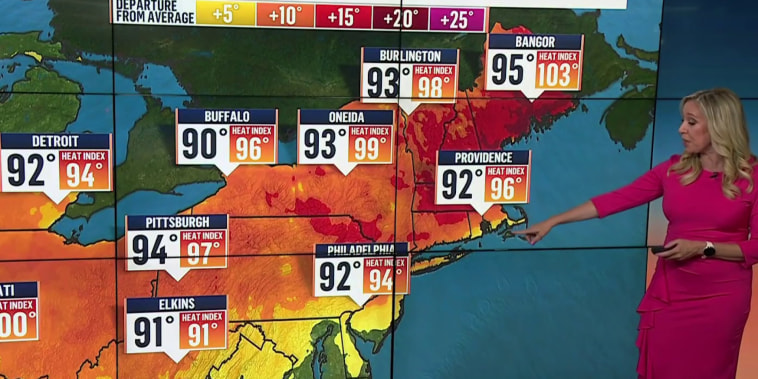Think of yourself as a member of a jury, listening to a lawyer who is presenting an opening argument. You'll want to know very soon whether the lawyer believes the accused to be guilty or not guilty, and how the lawyer plans to convince you. Readers of academic essays are like jury members: before they have read too far, they want to know what the essay argues as well as how the writer plans to make the argument. After reading your thesis statement, the reader should think, "This essay is going to try to convince me of something. I'm not convinced yet, but I'm interested to see how I might be."
An effective thesis cannot be answered with a simple "yes" or "no." A thesis is not a topic; nor is it a fact; nor is it an opinion. "Reasons for the fall of communism" is a topic. "Communism collapsed in Eastern Europe" is a fact known by educated people. "The fall of communism is the best thing that ever happened in Europe" is an opinion. (Superlatives like "the best" almost always lead to trouble. It's impossible to weigh every "thing" that ever happened in Europe. And what about the fall of Hitler? Couldn't that be "the best thing"?)
A good thesis has two parts. It should tell what you plan to argue, and it should "telegraph" how you plan to argue—that is, what particular support for your claim is going where in your essay.
Steps in Constructing a Thesis
First, analyze your primary sources. Look for tension, interest, ambiguity, controversy, and/or complication. Does the author contradict himself or herself? Is a point made and later reversed? What are the deeper implications of the author's argument? Figuring out the why to one or more of these questions, or to related questions, will put you on the path to developing a working thesis. (Without the why, you probably have only come up with an observation—that there are, for instance, many different metaphors in such-and-such a poem—which is not a thesis.)
Once you have a working thesis, write it down. There is nothing as frustrating as hitting on a great idea for a thesis, then forgetting it when you lose concentration. And by writing down your thesis you will be forced to think of it clearly, logically, and concisely. You probably will not be able to write out a final-draft version of your thesis the first time you try, but you'll get yourself on the right track by writing down what you have.
Keep your thesis prominent in your introduction. A good, standard place for your thesis statement is at the end of an introductory paragraph, especially in shorter (5-15 page) essays. Readers are used to finding theses there, so they automatically pay more attention when they read the last sentence of your introduction. Although this is not required in all academic essays, it is a good rule of thumb.
Anticipate the counterarguments. Once you have a working thesis, you should think about what might be said against it. This will help you to refine your thesis, and it will also make you think of the arguments that you'll need to refute later on in your essay. (Every argument has a counterargument. If yours doesn't, then it's not an argument—it may be a fact, or an opinion, but it is not an argument.)
This statement is on its way to being a thesis. However, it is too easy to imagine possible counterarguments. For example, a political observer might believe that Dukakis lost because he suffered from a "soft-on-crime" image. If you complicate your thesis by anticipating the counterargument, you'll strengthen your argument, as shown in the sentence below.
Some Caveats and Some Examples
A thesis is never a question. Readers of academic essays expect to have questions discussed, explored, or even answered. A question ("Why did communism collapse in Eastern Europe?") is not an argument, and without an argument, a thesis is dead in the water.
A thesis is never a list. "For political, economic, social and cultural reasons, communism collapsed in Eastern Europe" does a good job of "telegraphing" the reader what to expect in the essay—a section about political reasons, a section about economic reasons, a section about social reasons, and a section about cultural reasons. However, political, economic, social and cultural reasons are pretty much the only possible reasons why communism could collapse. This sentence lacks tension and doesn't advance an argument. Everyone knows that politics, economics, and culture are important.
A thesis should never be vague, combative or confrontational. An ineffective thesis would be, "Communism collapsed in Eastern Europe because communism is evil." This is hard to argue (evil from whose perspective? what does evil mean?) and it is likely to mark you as moralistic and judgmental rather than rational and thorough. It also may spark a defensive reaction from readers sympathetic to communism. If readers strongly disagree with you right off the bat, they may stop reading.
An effective thesis has a definable, arguable claim. "While cultural forces contributed to the collapse of communism in Eastern Europe, the disintegration of economies played the key role in driving its decline" is an effective thesis sentence that "telegraphs," so that the reader expects the essay to have a section about cultural forces and another about the disintegration of economies. This thesis makes a definite, arguable claim: that the disintegration of economies played a more important role than cultural forces in defeating communism in Eastern Europe. The reader would react to this statement by thinking, "Perhaps what the author says is true, but I am not convinced. I want to read further to see how the author argues this claim."
A thesis should be as clear and specific as possible. Avoid overused, general terms and abstractions. For example, "Communism collapsed in Eastern Europe because of the ruling elite's inability to address the economic concerns of the people" is more powerful than "Communism collapsed due to societal discontent."
Copyright 1999, Maxine Rodburg and The Tutors of the Writing Center at Harvard University
- Resources Home 🏠
- Try SciSpace Copilot
- Search research papers
- Add Copilot Extension
- Try AI Detector
- Try Paraphraser
- Try Citation Generator
- April Papers
- June Papers
- July Papers


What is a thesis | A Complete Guide with Examples

Table of Contents
A thesis is a comprehensive academic paper based on your original research that presents new findings, arguments, and ideas of your study. It’s typically submitted at the end of your master’s degree or as a capstone of your bachelor’s degree.
However, writing a thesis can be laborious, especially for beginners. From the initial challenge of pinpointing a compelling research topic to organizing and presenting findings, the process is filled with potential pitfalls.
Therefore, to help you, this guide talks about what is a thesis. Additionally, it offers revelations and methodologies to transform it from an overwhelming task to a manageable and rewarding academic milestone.
What is a thesis?
A thesis is an in-depth research study that identifies a particular topic of inquiry and presents a clear argument or perspective about that topic using evidence and logic.
Writing a thesis showcases your ability of critical thinking, gathering evidence, and making a compelling argument. Integral to these competencies is thorough research, which not only fortifies your propositions but also confers credibility to your entire study.
Furthermore, there's another phenomenon you might often confuse with the thesis: the ' working thesis .' However, they aren't similar and shouldn't be used interchangeably.
A working thesis, often referred to as a preliminary or tentative thesis, is an initial version of your thesis statement. It serves as a draft or a starting point that guides your research in its early stages.
As you research more and gather more evidence, your initial thesis (aka working thesis) might change. It's like a starting point that can be adjusted as you learn more. It's normal for your main topic to change a few times before you finalize it.
While a thesis identifies and provides an overarching argument, the key to clearly communicating the central point of that argument lies in writing a strong thesis statement.
What is a thesis statement?
A strong thesis statement (aka thesis sentence) is a concise summary of the main argument or claim of the paper. It serves as a critical anchor in any academic work, succinctly encapsulating the primary argument or main idea of the entire paper.
Typically found within the introductory section, a strong thesis statement acts as a roadmap of your thesis, directing readers through your arguments and findings. By delineating the core focus of your investigation, it offers readers an immediate understanding of the context and the gravity of your study.
Furthermore, an effectively crafted thesis statement can set forth the boundaries of your research, helping readers anticipate the specific areas of inquiry you are addressing.
Different types of thesis statements
A good thesis statement is clear, specific, and arguable. Therefore, it is necessary for you to choose the right type of thesis statement for your academic papers.
Thesis statements can be classified based on their purpose and structure. Here are the primary types of thesis statements:
Argumentative (or Persuasive) thesis statement
Purpose : To convince the reader of a particular stance or point of view by presenting evidence and formulating a compelling argument.
Example : Reducing plastic use in daily life is essential for environmental health.
Analytical thesis statement
Purpose : To break down an idea or issue into its components and evaluate it.
Example : By examining the long-term effects, social implications, and economic impact of climate change, it becomes evident that immediate global action is necessary.
Expository (or Descriptive) thesis statement
Purpose : To explain a topic or subject to the reader.
Example : The Great Depression, spanning the 1930s, was a severe worldwide economic downturn triggered by a stock market crash, bank failures, and reduced consumer spending.
Cause and effect thesis statement
Purpose : To demonstrate a cause and its resulting effect.
Example : Overuse of smartphones can lead to impaired sleep patterns, reduced face-to-face social interactions, and increased levels of anxiety.
Compare and contrast thesis statement
Purpose : To highlight similarities and differences between two subjects.
Example : "While both novels '1984' and 'Brave New World' delve into dystopian futures, they differ in their portrayal of individual freedom, societal control, and the role of technology."
When you write a thesis statement , it's important to ensure clarity and precision, so the reader immediately understands the central focus of your work.
What is the difference between a thesis and a thesis statement?
While both terms are frequently used interchangeably, they have distinct meanings.
A thesis refers to the entire research document, encompassing all its chapters and sections. In contrast, a thesis statement is a brief assertion that encapsulates the central argument of the research.
Here’s an in-depth differentiation table of a thesis and a thesis statement.
Aspect | Thesis | Thesis Statement |
Definition | An extensive document presenting the author's research and findings, typically for a degree or professional qualification. | A concise sentence or two in an essay or research paper that outlines the main idea or argument. |
Position | It’s the entire document on its own. | Typically found at the end of the introduction of an essay, research paper, or thesis. |
Components | Introduction, methodology, results, conclusions, and bibliography or references. | Doesn't include any specific components |
Purpose | Provides detailed research, presents findings, and contributes to a field of study. | To guide the reader about the main point or argument of the paper or essay. |
Now, to craft a compelling thesis, it's crucial to adhere to a specific structure. Let’s break down these essential components that make up a thesis structure
15 components of a thesis structure
Navigating a thesis can be daunting. However, understanding its structure can make the process more manageable.
Here are the key components or different sections of a thesis structure:
Your thesis begins with the title page. It's not just a formality but the gateway to your research.

Here, you'll prominently display the necessary information about you (the author) and your institutional details.
- Title of your thesis
- Your full name
- Your department
- Your institution and degree program
- Your submission date
- Your Supervisor's name (in some cases)
- Your Department or faculty (in some cases)
- Your University's logo (in some cases)
- Your Student ID (in some cases)
In a concise manner, you'll have to summarize the critical aspects of your research in typically no more than 200-300 words.

This includes the problem statement, methodology, key findings, and conclusions. For many, the abstract will determine if they delve deeper into your work, so ensure it's clear and compelling.
Acknowledgments
Research is rarely a solitary endeavor. In the acknowledgments section, you have the chance to express gratitude to those who've supported your journey.

This might include advisors, peers, institutions, or even personal sources of inspiration and support. It's a personal touch, reflecting the humanity behind the academic rigor.
Table of contents
A roadmap for your readers, the table of contents lists the chapters, sections, and subsections of your thesis.

By providing page numbers, you allow readers to navigate your work easily, jumping to sections that pique their interest.
List of figures and tables
Research often involves data, and presenting this data visually can enhance understanding. This section provides an organized listing of all figures and tables in your thesis.

It's a visual index, ensuring that readers can quickly locate and reference your graphical data.
Introduction
Here's where you introduce your research topic, articulate the research question or objective, and outline the significance of your study.

- Present the research topic : Clearly articulate the central theme or subject of your research.
- Background information : Ground your research topic, providing any necessary context or background information your readers might need to understand the significance of your study.
- Define the scope : Clearly delineate the boundaries of your research, indicating what will and won't be covered.
- Literature review : Introduce any relevant existing research on your topic, situating your work within the broader academic conversation and highlighting where your research fits in.
- State the research Question(s) or objective(s) : Clearly articulate the primary questions or objectives your research aims to address.
- Outline the study's structure : Give a brief overview of how the subsequent sections of your work will unfold, guiding your readers through the journey ahead.
The introduction should captivate your readers, making them eager to delve deeper into your research journey.
Literature review section
Your study correlates with existing research. Therefore, in the literature review section, you'll engage in a dialogue with existing knowledge, highlighting relevant studies, theories, and findings.

It's here that you identify gaps in the current knowledge, positioning your research as a bridge to new insights.
To streamline this process, consider leveraging AI tools. For example, the SciSpace literature review tool enables you to efficiently explore and delve into research papers, simplifying your literature review journey.
Methodology
In the research methodology section, you’ll detail the tools, techniques, and processes you employed to gather and analyze data. This section will inform the readers about how you approached your research questions and ensures the reproducibility of your study.

Here's a breakdown of what it should encompass:
- Research Design : Describe the overall structure and approach of your research. Are you conducting a qualitative study with in-depth interviews? Or is it a quantitative study using statistical analysis? Perhaps it's a mixed-methods approach?
- Data Collection : Detail the methods you used to gather data. This could include surveys, experiments, observations, interviews, archival research, etc. Mention where you sourced your data, the duration of data collection, and any tools or instruments used.
- Sampling : If applicable, explain how you selected participants or data sources for your study. Discuss the size of your sample and the rationale behind choosing it.
- Data Analysis : Describe the techniques and tools you used to process and analyze the data. This could range from statistical tests in quantitative research to thematic analysis in qualitative research.
- Validity and Reliability : Address the steps you took to ensure the validity and reliability of your findings to ensure that your results are both accurate and consistent.
- Ethical Considerations : Highlight any ethical issues related to your research and the measures you took to address them, including — informed consent, confidentiality, and data storage and protection measures.
Moreover, different research questions necessitate different types of methodologies. For instance:
- Experimental methodology : Often used in sciences, this involves a controlled experiment to discern causality.
- Qualitative methodology : Employed when exploring patterns or phenomena without numerical data. Methods can include interviews, focus groups, or content analysis.
- Quantitative methodology : Concerned with measurable data and often involves statistical analysis. Surveys and structured observations are common tools here.
- Mixed methods : As the name implies, this combines both qualitative and quantitative methodologies.
The Methodology section isn’t just about detailing the methods but also justifying why they were chosen. The appropriateness of the methods in addressing your research question can significantly impact the credibility of your findings.
Results (or Findings)
This section presents the outcomes of your research. It's crucial to note that the nature of your results may vary; they could be quantitative, qualitative, or a mix of both.

Quantitative results often present statistical data, showcasing measurable outcomes, and they benefit from tables, graphs, and figures to depict these data points.
Qualitative results , on the other hand, might delve into patterns, themes, or narratives derived from non-numerical data, such as interviews or observations.
Regardless of the nature of your results, clarity is essential. This section is purely about presenting the data without offering interpretations — that comes later in the discussion.
In the discussion section, the raw data transforms into valuable insights.
Start by revisiting your research question and contrast it with the findings. How do your results expand, constrict, or challenge current academic conversations?
Dive into the intricacies of the data, guiding the reader through its implications. Detail potential limitations transparently, signaling your awareness of the research's boundaries. This is where your academic voice should be resonant and confident.
Practical implications (Recommendation) section
Based on the insights derived from your research, this section provides actionable suggestions or proposed solutions.
Whether aimed at industry professionals or the general public, recommendations translate your academic findings into potential real-world actions. They help readers understand the practical implications of your work and how it can be applied to effect change or improvement in a given field.
When crafting recommendations, it's essential to ensure they're feasible and rooted in the evidence provided by your research. They shouldn't merely be aspirational but should offer a clear path forward, grounded in your findings.
The conclusion provides closure to your research narrative.
It's not merely a recap but a synthesis of your main findings and their broader implications. Reconnect with the research questions or hypotheses posited at the beginning, offering clear answers based on your findings.

Reflect on the broader contributions of your study, considering its impact on the academic community and potential real-world applications.
Lastly, the conclusion should leave your readers with a clear understanding of the value and impact of your study.
References (or Bibliography)
Every theory you've expounded upon, every data point you've cited, and every methodological precedent you've followed finds its acknowledgment here.

In references, it's crucial to ensure meticulous consistency in formatting, mirroring the specific guidelines of the chosen citation style .
Proper referencing helps to avoid plagiarism , gives credit to original ideas, and allows readers to explore topics of interest. Moreover, it situates your work within the continuum of academic knowledge.
To properly cite the sources used in the study, you can rely on online citation generator tools to generate accurate citations!
Here’s more on how you can cite your sources.
Often, the depth of research produces a wealth of material that, while crucial, can make the core content of the thesis cumbersome. The appendix is where you mention extra information that supports your research but isn't central to the main text.

Whether it's raw datasets, detailed procedural methodologies, extended case studies, or any other ancillary material, the appendices ensure that these elements are archived for reference without breaking the main narrative's flow.
For thorough researchers and readers keen on meticulous details, the appendices provide a treasure trove of insights.
Glossary (optional)
In academics, specialized terminologies, and jargon are inevitable. However, not every reader is versed in every term.
The glossary, while optional, is a critical tool for accessibility. It's a bridge ensuring that even readers from outside the discipline can access, understand, and appreciate your work.

By defining complex terms and providing context, you're inviting a wider audience to engage with your research, enhancing its reach and impact.
Remember, while these components provide a structured framework, the essence of your thesis lies in the originality of your ideas, the rigor of your research, and the clarity of your presentation.
As you craft each section, keep your readers in mind, ensuring that your passion and dedication shine through every page.
Thesis examples
To further elucidate the concept of a thesis, here are illustrative examples from various fields:
Example 1 (History): Abolition, Africans, and Abstraction: the Influence of the ‘Noble Savage’ on British and French Antislavery Thought, 1787-1807 by Suchait Kahlon.
Example 2 (Climate Dynamics): Influence of external forcings on abrupt millennial-scale climate changes: a statistical modelling study by Takahito Mitsui · Michel Crucifix
Checklist for your thesis evaluation
Evaluating your thesis ensures that your research meets the standards of academia. Here's an elaborate checklist to guide you through this critical process.
Content and structure
- Is the thesis statement clear, concise, and debatable?
- Does the introduction provide sufficient background and context?
- Is the literature review comprehensive, relevant, and well-organized?
- Does the methodology section clearly describe and justify the research methods?
- Are the results/findings presented clearly and logically?
- Does the discussion interpret the results in light of the research question and existing literature?
- Is the conclusion summarizing the research and suggesting future directions or implications?
Clarity and coherence
- Is the writing clear and free of jargon?
- Are ideas and sections logically connected and flowing?
- Is there a clear narrative or argument throughout the thesis?
Research quality
- Is the research question significant and relevant?
- Are the research methods appropriate for the question?
- Is the sample size (if applicable) adequate?
- Are the data analysis techniques appropriate and correctly applied?
- Are potential biases or limitations addressed?
Originality and significance
- Does the thesis contribute new knowledge or insights to the field?
- Is the research grounded in existing literature while offering fresh perspectives?
Formatting and presentation
- Is the thesis formatted according to institutional guidelines?
- Are figures, tables, and charts clear, labeled, and referenced in the text?
- Is the bibliography or reference list complete and consistently formatted?
- Are appendices relevant and appropriately referenced in the main text?
Grammar and language
- Is the thesis free of grammatical and spelling errors?
- Is the language professional, consistent, and appropriate for an academic audience?
- Are quotations and paraphrased material correctly cited?
Feedback and revision
- Have you sought feedback from peers, advisors, or experts in the field?
- Have you addressed the feedback and made the necessary revisions?
Overall assessment
- Does the thesis as a whole feel cohesive and comprehensive?
- Would the thesis be understandable and valuable to someone in your field?
Ensure to use this checklist to leave no ground for doubt or missed information in your thesis.
After writing your thesis, the next step is to discuss and defend your findings verbally in front of a knowledgeable panel. You’ve to be well prepared as your professors may grade your presentation abilities.
Preparing your thesis defense
A thesis defense, also known as "defending the thesis," is the culmination of a scholar's research journey. It's the final frontier, where you’ll present their findings and face scrutiny from a panel of experts.
Typically, the defense involves a public presentation where you’ll have to outline your study, followed by a question-and-answer session with a committee of experts. This committee assesses the validity, originality, and significance of the research.
The defense serves as a rite of passage for scholars. It's an opportunity to showcase expertise, address criticisms, and refine arguments. A successful defense not only validates the research but also establishes your authority as a researcher in your field.
Here’s how you can effectively prepare for your thesis defense .
Now, having touched upon the process of defending a thesis, it's worth noting that scholarly work can take various forms, depending on academic and regional practices.
One such form, often paralleled with the thesis, is the 'dissertation.' But what differentiates the two?
Dissertation vs. Thesis
Often used interchangeably in casual discourse, they refer to distinct research projects undertaken at different levels of higher education.
To the uninitiated, understanding their meaning might be elusive. So, let's demystify these terms and delve into their core differences.
Here's a table differentiating between the two.
Aspect | Thesis | Dissertation |
Purpose | Often for a master's degree, showcasing a grasp of existing research | Primarily for a doctoral degree, contributing new knowledge to the field |
Length | 100 pages, focusing on a specific topic or question. | 400-500 pages, involving deep research and comprehensive findings |
Research Depth | Builds upon existing research | Involves original and groundbreaking research |
Advisor's Role | Guides the research process | Acts more as a consultant, allowing the student to take the lead |
Outcome | Demonstrates understanding of the subject | Proves capability to conduct independent and original research |
Wrapping up
From understanding the foundational concept of a thesis to navigating its various components, differentiating it from a dissertation, and recognizing the importance of proper citation — this guide covers it all.
As scholars and readers, understanding these nuances not only aids in academic pursuits but also fosters a deeper appreciation for the relentless quest for knowledge that drives academia.
It’s important to remember that every thesis is a testament to curiosity, dedication, and the indomitable spirit of discovery.
Good luck with your thesis writing!
Frequently Asked Questions
A thesis typically ranges between 40-80 pages, but its length can vary based on the research topic, institution guidelines, and level of study.
A PhD thesis usually spans 200-300 pages, though this can vary based on the discipline, complexity of the research, and institutional requirements.
To identify a thesis topic, consider current trends in your field, gaps in existing literature, personal interests, and discussions with advisors or mentors. Additionally, reviewing related journals and conference proceedings can provide insights into potential areas of exploration.
The conceptual framework is often situated in the literature review or theoretical framework section of a thesis. It helps set the stage by providing the context, defining key concepts, and explaining the relationships between variables.
A thesis statement should be concise, clear, and specific. It should state the main argument or point of your research. Start by pinpointing the central question or issue your research addresses, then condense that into a single statement, ensuring it reflects the essence of your paper.
You might also like

Boosting Citations: A Comparative Analysis of Graphical Abstract vs. Video Abstract

The Impact of Visual Abstracts on Boosting Citations

Introducing SciSpace’s Citation Booster To Increase Research Visibility
The Thesis Process
The thesis is an opportunity to work independently on a research project of your own design and contribute to the scholarly literature in your field. You emerge from the thesis process with a solid understanding of how original research is executed and how to best communicate research results. Many students have gone on to publish their research in academic or professional journals.
To ensure affordability, the per-credit tuition rate for the 8-credit thesis is the same as our regular course tuition. There are no additional fees (regular per-credit graduate tuition x 8 credits).
Below are the steps that you need to follow to fulfill the thesis requirement. Please know that through each step, you will receive guidance and mentorship.
1. Meet with Your Research Advisor
Upon admission to the program, set up an introductory meeting with your Research Advisor to discuss potential thesis topics as well as course selections that can support your thesis path.
When you have completed between 24 and 32 credits, you work more intensively with your assigned Research Advisor to determine a specific thesis topic.
Log in to MyDCE , then ALB/ALM Community to schedule an appointment with your assigned Research Advisor via the Degree Candidate Portal.
Failure to work with your Research Advisor initially and then more intensively may result in your Crafting the Thesis Proposal (CTP) Application not being approved (see below) and/or the selection of a different thesis topic.
Thesis Topic Selection Guidelines
Every effort is made to support research interests that are grounded in your ALM course work, but faculty guidance is not available for all possible projects. Therefore, revision or a change of thesis topic may be necessary.
- The above point about topic selection is particularly pertinent to scientific research (e.g., biology) that is dependent upon laboratory space, project funding, and access to private databases.
- This point is also critical for our candidates in ALM, liberal arts fields (i.e., anthropology, English, government, history, international relations, psychology, and religion) who are required to have Harvard faculty direct their thesis projects. Review Harvard’s course catalog online ( My.Harvard.edu ) to be sure that there are faculty teaching courses related to your thesis topic. If faculty are not available, you will need to choose an alternative topic.
- Your topic choice must be a new area of research for you. You cannot re-purpose prior research. If you want to draw or expand upon your own previously written scholarship for a small portion of your thesis, you need to obtain the explicit permission of your research advisor and cite the work in both the proposal and thesis. Violations of this policy will be referred to the Administrative Board.
We’ve put together this guide to help frame your thinking about thesis topic selection.
While it is natural to follow your interests in selecting a thesis topic, it is important to avoid choosing a topic where your own passions might produce insurmountable biases and assumptions. A thesis is not a piece of advocacy work where you are out to prove something that you already believe. Thesis projects must take a fair and balanced stance by bringing in differing points of view from respected scholars in the field.
2. Prepare Your Crafting the Thesis Proposal Application
Once you and your Research Advisor have confirmed your thesis topic, the next step in the process is to prepare and submit the CTP Application in order to gain registration approval for the Crafting the Thesis Proposal (CTP) tutorial or course.
The CTP Application process confirms that you have done enough prior reading and thinking about your thesis topic to generate a pertinent and answerable research question. Pre-CTP preparation is critical as it helps to ensure that you will benefit from and succeed in the CTP.
Application Approvals and Denials. Your Research Advisor will provide feedback on your CTP Application. If your application is not approved after 3 submissions, your Research Advisor cannot approve your CTP registration.
If not approved, you’ll need to take additional time for further revisions and submit a new CTP Application during the next CTP submission cycle (if your five-year degree completion date allows).
Application Eligibility Requirements. To be eligible to submit a CTP Application, you need to (1) be in good standing and (2) have completed a minimum of 32 degree-applicable credits, including the research methods/statistics and Engaging in Scholarly Conversation requirement, if required for your field.
Advising Note for Psychology Candidates View More
Students in psychology sometimes face difficulty securing necessary IRB approvals for certain projects. For this reason, Research Advisors will not approve proposals that raise significant concerns about feasibility. Such concerns include cases where projects would require the researcher to possess a level of expertise or experience exceeding documented capabilities, as well as instances where the researcher is unlikely to be able to obtain appropriate faculty supervision for a proposed topic, question, method, or procedure. You must schedule an appointment with your Research Advisor at least three months in advance of the CTP Application deadlines to discuss potential research projects to ensure adequate time for assistance in developing a viable project idea.
Advising Note for Biology and former Biotechnology and Bioengineering and Nanotechnology Candidates View More
Thesis projects in these fields are designed to support ongoing scientific research happening in Harvard University, other academic institutions, or life science industry labs and usually these are done under the direction of a principal investigator (PI). Hence, you need to have a thesis director approved by your research advisor prior to submitting CTP Application. Your CTP Application is then framed by the lab’s research. Schedule an appointment with your research advisor a few months in advance of the CTP Application deadlines in order to discuss potential research projects and thesis director assignment.
The CTP Application is sent to our central email box: [email protected] by the following firm deadlines:
- June 1 for fall CTP
- November 1 for spring CTP.
- September 1 for the three-week January session (ALM sustainability candidates only)
- International sustainability students who need a student visa to attend Harvard Summer School must be officially admitted to the degree program before February 1, must submit the CTP Application on February 1, and must register for the CTP course on March 1 in order to submit timely I-20 paperwork. See international students guidelines for more information.
3. Register and Successfully Complete Crafting the Thesis Proposal
Once your CTP Application is approved, you register for the Crafting the Thesis Proposal (CTP) tutorial or course as you would any other degree requirement.
The goal of the CTP is to produce a complete, well-written draft of a proposal containing all of the sections required by your Research Advisor. Creating an academically strong thesis proposal sets the foundation for a high-quality thesis and helps garner the attention of a well-respected thesis director.
Thesis proposals typically include approximately 15 to 20 pages of text, in addition to any required reference sections, such as bibliographies and glossary/definition of terms.
Tutorial experience. The fall and spring CTP tutorials are not courses in the traditional sense. Although there will be assignments for you to complete during the CTP, with due dates, and there will be times when you and your classmates meet as a group with your Research Advisor, there won’t be a regularly scheduled class meeting time for the CTP.
The main work for the CTP will consist of your working independently on your proposal with your Research Advisor by submitting multiple drafts and scheduling individual appointments.
Grading. You need to make self-directed progress on the proposal without special prompting from the research advisor. You receive a final grade of SAT or UNSAT (failing grade).
You are expected to incorporate all of your Research Advisor’s feedback and be fully committed to producing an academically strong proposal leading to a thesis worthy of a Harvard degree. If you are unable to take advice from your Research Advisor, follow directions, or produce an acceptable proposal, you will not pass the CTP.
The CTP for sustainability is a three-week course in the traditional sense and you receive a letter grade, and it must be B- or higher to receive degree credit for the course.
Academic Integrity. Successful CTP completion also includes a check on the proper use of sources according to our academic integrity guidelines. Violations of our academic integrity policy will be referred to the Administrative Board.
Maximum of two attempts . If you don’t pass the CTP, you’ll have — if your five-year, degree-completion date allows — just one more attempt to complete the CTP before being required to withdraw from the program. If you fail the CTP just once and have no more time to complete the degree, your candidacy will automatically expire. Please note that a WD grade counts as an attempt.
If by not passing the CTP you fall into poor academic standing, you will need to take additional degree-applicable courses to return to good standing before enrolling in the CTP for your second and final time, but only if your five-year, degree-completion date allows. If you have no more time on your five-year clock, you will be required to withdraw from the program.
Human Subjects
If your thesis, regardless of field, will involve the use of human subjects (e.g., interviews, surveys, observations), you will need to have your research vetted by the Committee on the Use of Human Subjects (CUHS) of Harvard University. Please review the IRB Lifecycle Guide located on the CUHS website. Your research advisor will help you prepare a draft copy of the project protocol form that you will then finalize with your thesis director to send to the CUHS.
Given the amount of time that can be required for IRB review, drafting of the required CUHS project protocol forms need to be started with your Research Advisor during the CTP tutorial, before a thesis director has been assigned.
4. Post-CTP Proposal Approval, Thesis Director Assignment, and Registration
Successfully completion of the CTP means you have completed a well-written full draft proposal. Ordinarily, this full draft is not a final accepted proposal. Most students reach the final accepted proposal stage by submitting additional changes and edits to their RA post-CTP.
Post-CTP Changes and Edits Deadline. We expect you to work diligently and quickly with your RA post-CTP to move from full draft to final proposal stage. Indeed, you should have an approved final proposal and be registered in the thesis soon after CTP completion, within weeks, but no later than 3 months. You cannot delay. If you take longer than 3 months after the CTP to register for the thesis, you may be required to retake the CTP.
Thesis Director Assignment. Once your RA has determined that your draft has reached the final proposal stage, you move to the thesis director assignment stage. The Research Advisor places you with a thesis director by sending out your final proposal to prospective Thesis Directors.
Do not approach faculty to ask about directing your thesis. You may suggest names of any potential Thesis Directors to your Research Advisor, but it must be the Research Advisor who makes contact with them. (If they are eligible/available to direct your thesis, after you have an approved thesis proposal.) You are not permitted to approach faculty to ask them about directing your thesis.
Registration. When a Thesis Director has been identified or the thesis proposal has been fully vetted by the preassigned life science Thesis Director, you will receive a letter of authorization from the Assistant Dean of Academic Programs officially approving your thesis work and providing you with instructions on how to register for the eight-credit master’s thesis. The letter will also have a tentative graduation date as well as four mandatory thesis submission dates (see Thesis Timetable below).
When registering for the thesis, you will have two weeks to pay in full. This is an eight-credit course, so be sure to have the necessary funds available when you register.
You must be good academic standing to register for the thesis. If not, you’ll need to complete additional courses to bring your GPA up to the 3.0 minimum prior to registration.
Thesis Submission Deadlines and Graduation Timetable
The thesis is a 9-to-12-month project that begins after the Crafting the Thesis Proposal (CTP); when your Research Advisor has approved your proposal and identified a Thesis Director.
The date for the appointment of your Thesis Director determines the graduation cycle that will be automatically assigned to you:
| Thesis Milestone | For May Graduation | For November Graduation | For February Graduation |
|---|---|---|---|
| March 1 – June 30 | August 15 – October 15 | November 1 – February 15 | |
| . | February 1 | July 15 | October 1 |
| . | March 1 | August 15 | November 1 |
| | April 1 | September 15 | December 1 |
| April 15 | October 1 | December 15 | |
| (see step 7 below). | May 1 | October 7 | January 3 |
As you can see above, you do not submit your thesis all at once at the end, but in four phases: (1) complete draft to TD, (2) final draft to RA for format review and academic integrity check, (3) format approved draft submitted to TD for grading, and (4) upload your 100% complete graded thesis to ETDs.
Due dates for all phases for your assigned graduation cycle cannot be missed. You must submit materials by the date indicated by 5 PM EST (even if the date falls on a weekend). If you are late, you will not be able to graduate during your assigned cycle.
If you need additional time to complete your thesis, you need to formally request an extension by emailing that petition to: [email protected] . Regardless of when you started, the maximum allotted time to complete your thesis, including any granted extensions of time is 12 months.
Advising Tip to Meet Your Five-Year Deadline: The last possible time you can register for the CTP to meet your five-year deadline date is the fall term two years prior or, if a sustainability student, in the January session one year prior. It is not, however, recommended to wait this long. Indeed, it is vigorously discouraged.
For example, if your five-year deadline is May 2026:
- Complete the CTP in fall 2025 (or in January 2025, if a sustainability student)
- Be assigned a Thesis Director (TD) in March/April 2025
- Begin the 9–12-month thesis project with TD
- Submit a complete draft of your thesis to your TD by February 1, 2026
- Follow through with all other submission deadlines (April 1, April 15 and May 1 — see table above)
- Graduate in May 2026
5. Working with Your Thesis Director
You must work diligently and independently, following the advice of your Thesis Director in a consistent, regular manner equivalent to full-time academic work to complete both the research and the writing phases of your thesis by your required timeline.
You are expected to incorporate all of your Thesis Director’s feedback and be fully committed to producing an academically strong thesis worthy of a Harvard degree. If you are unable to take advice from your Thesis Director, follow directions, or produce an acceptable scholarly thesis product, you will not receive a passing grade.
You are required to produce at least 50 pages of text (not including front matter and appendices). Chapter topics (e.g., introduction, background, methods, findings, conclusion) vary by field.
Once registered in the thesis, we will do a 3-month check-in with you and your Thesis Director to ensure progress is being made. If your Thesis Director reports little to no progress, the Dean of Academic Programs reserves the right to issue a thesis not complete (TNC) grade (see Thesis Grading below).
6. Thesis Template, Format Review, and Academic Integrity Check
All ALM thesis projects must written in Microsoft Word and follow a specific Harvard Extension School format. A properly formatted thesis is an explicit degree requirement; you cannot graduate without it.
You are required to use the Extension School ALM Thesis Template or the Extension School ALM Thesis Template for Creative Writing (specifically designed for creative writing degree candidates). The template has all the mandatory thesis formatting built in.
Besides saving you a considerable amount of time as you write your thesis, the template ensures that your submitted thesis meets the mandatory style guidelines for margins, font, title page, table of contents, and chapter headings. If you use the template, format review should go smoothly, if not, a delayed graduation is highly likely.
Your Research Advisor will complete the format review prior to submitting your thesis to your Thesis Director for final grading according to the Thesis Timetable (see above).
Academic Integrity. Format review also includes a check on the proper use of sources according to our academic integrity guidelines. Violations of our academic integrity policy will be referred to the Administrative Board.
7. Mandatory Thesis Archiving
Once your thesis is finalized, meaning that the required grade has been earned and all edits have been completed, you must upload your thesis to Harvard University’s electronic thesis and dissertation submission system (ETDs).
Uploading your thesis ETDs is an explicit degree requirement; you cannot graduate without completing this step. Furthermore, no changes to the thesis are allowed once it has been graded and archived in ETDs.
The thesis project will be sent to several downstream systems:
- Your work will be preserved using Harvard’s digital repository DASH (Digital Access to Scholarship at Harvard).
- Metadata about your work will be sent to HOLLIS (the Harvard Library catalog).
- Your work will be preserved in Harvard Library’s DRS2 (digital preservation repository).
By submitting work through ETDs @ Harvard you will be signing the Harvard Author Agreement. This license does not constrain your rights to publish your work subsequently. You retain all intellectual property rights.
For more information on Harvard’s open access initiatives, we recommend you view the Director of the Office of Scholarly Communication (OSC), Peter Suber’s brief introduction .
Thesis Grading
You need to earn a grade of B- or higher in the thesis. If you fail to complete substantial work on the thesis, you will earn a grade of TNC (thesis not complete). If you have already earned two withdrawal grades, the TNC grade will count as a zero in your cumulative GPA.
If you earn a grade below B-, you will need to petition the Administrative Board for permission to attempt the thesis for a second and final time. The petition process is only available if you are in good academic standing and your five-year, degree-completion date allows for more time. Your candidacy will automatically expire if you do not successfully complete the thesis by your required date.
If approved for a second attempt, you may be required to develop a new proposal on a different topic by re-enrolling in the CTP and being assigned a different thesis director. Tuition for the second attempt is calculated at the current year’s rate.
If by not passing the thesis you fall into poor academic standing, you’ll need to take additional degree-applicable courses to return to good standing before re-engaging with the thesis process for the second and final time. This is only an option if your five-year, degree-completion date allows for more time.
The Board only reviews cases in which extenuating circumstances prevented the successful completion of the thesis.
Harvard Division of Continuing Education
The Division of Continuing Education (DCE) at Harvard University is dedicated to bringing rigorous academics and innovative teaching capabilities to those seeking to improve their lives through education. We make Harvard education accessible to lifelong learners from high school to retirement.

How to Write a Master's Thesis: A Guide to Planning Your Thesis, Pursuing It, and Avoiding Pitfalls
#scribendiinc
Part 1: Initial Considerations
Who needs to write a master’s thesis.
Thesis writing is one of the more daunting challenges of higher education. That being said, not all master's students have to write a thesis. For example, fields that place a stronger emphasis on applied knowledge, such as nursing, business, and education, tend to have projects and exams to test students on the skills and abilities associated with those fields. Conversely, in disciplines that require in-depth research or highly polished creative abilities, students are usually expected to prove their understanding and independence with a thesis.
What's Your Goal?
Do you want to write a thesis? The process is a long one, often spanning years. It's best to know exactly what you want before you begin. Many people are motivated by career goals. For example, hiring managers may see a master's degree as proof that the candidate is an expert within their field and can lead, motivate, and demonstrate initiative for themselves and others. Others dream of earning their doctorate, and they see a master's degree as a stepping stone toward their Ph.D .

No matter what your desired goal is, you should have one before you start your thesis. With your goal in mind, your work will have a purpose, which will allow you to measure your progress more easily.
Major Types of Theses
Once you've carefully researched or even enrolled in a master's program—a feat that involves its own planning and resources —you should know if you are expected to produce a quantitative (which occurs in many math and science programs), qualitative (which occurs in many humanities programs), or creative (which occurs in many creative writing, music, or fine arts programs) thesis.
Time and Energy Considerations
Advanced degrees are notoriously time and energy consuming. If you have a job, thesis writing will become your second job. If you have a family, they will need to know that your thesis will take a great deal of your attention, energy, and focus.

Your studies should not consume you, but they also should not take a back seat to everything else. You will be expected to attend classes, conduct research, source relevant literature, and schedule meetings with various people as you pursue your master's, so it's important to let those you care about know what's going on.
As a general note, most master's programs expect students to finish within a two-year period but are willing to grant extra time if requested, especially if that time is needed to deal with unexpected life events (more on those later).
Part 2: Form an Initial Thesis Question, and Find a Supervisor
When to begin forming your initial thesis question.
Some fields, such as history, may require you to have already formed your thesis question and to have used it to create a statement of intent (outlining the nature of your research) prior to applying to a master’s program. Others may require this information only after you've been accepted. Most of the time, you will be expected to come up with your topic yourself. However, in some disciplines, your supervisor may assign a general research topic to you.
Overall, requirements vary immensely from program to program, so it's best to confirm the exact requirements of your specific program.
What to Say to Your Supervisor
You will have a supervisor during your master's studies. Have you identified who that person will be? If yes, have you introduced yourself via email or phone and obtained information on the processes and procedures that are in place for your master's program? Once you've established contact, request an in-person meeting with him or her, and take a page of questions along with you. Your questions might include:
- Is there a research subject you can recommend in my field?
- I would like to pursue [target research subject] for my thesis. Can you help me narrow my focus?
- Can you give me an example of a properly formatted thesis proposal for my program?
Don't Be Afraid to Ask for Help (to a Degree)
Procedures and expectations vary from program to program, and your supervisor is there to help remove doubt and provide encouragement so you can follow the right path when you embark on writing your thesis. Since your supervisor has almost certainly worked with other graduate students (and was one at some point), take advantage of their experience, and ask questions to put your mind at ease about how to write a master’s thesis.
That being said, do not rely too heavily on your supervisor. As a graduate student, you are also expected to be able to work independently. Proving your independent initiative and capacity is part of what will earn you your master's degree.
Part 3: Revise Your Thesis
Read everything you can get your hands on.
Whether you have a question or need to create one, your next step is simple and applies to all kinds of theses: read.

Seek Out Knowledge or Research Gaps
Read everything you can that relates to the question or the field you are studying. The only way you will be able to determine where you can go is to see where everyone else has been. After you have read some published material, you will start to spot gaps in current research or notice things that could be developed further with an alternative approach. Things that are known but not understood or understood but not explained clearly or consistently are great potential thesis subjects. Addressing something already known from a new perspective or with a different style could also be a potentially valuable project. Whichever way you choose to do it, keep in mind that your project should make a valuable contribution to your field.

Talk with Experts in Your Field (and Don't Be Afraid to Revise Your Thesis)
To help narrow down your thesis topic, talk to your supervisor. Your supervisor will have an idea of what is current in your field and what can be left alone because others are already working on it. Additionally, the school you are attending will have programs and faculty with particular areas of interest within your chosen field.
On a similar note, don't be surprised if your thesis question changes as you study. Other students and researchers are out there, and as they publish, what you are working on can change. You might also discover that your question is too vague, not substantial enough, or even no longer relevant. Do not lose heart! Take what you know and adjust the question to address these concerns as they arise. The freedom to adapt is part of the power you hold as a graduate student.
Part 4: Select a Proposal Committee
What proposal committees are and why they're useful.
When you have a solid question or set of questions, draft a proposal.

You'll need an original stance and a clear justification for asking, and answering, your thesis question. To ensure this, a committee will review your thesis proposal. Thankfully, that committee will consist of people assigned by your supervisor or department head or handpicked by you. These people will be experts who understand your field of study and will do everything in their power to ensure that you are pursuing something worthwhile. And yes, it is okay to put your supervisor on your committee. Some programs even require that your supervisor be on your committee.
Just remember that the committee will expect you to schedule meetings with them, present your proposal, respond to any questions they might have for you, and ultimately present your findings and thesis when all the work is done. Choose those who are willing to support you, give constructive feedback, and help address issues with your proposal. And don't forget to give your proposal a good, thorough edit and proofread before you present it.
How to Prepare for Committee Meetings
Be ready for committee meetings with synopses of your material for committee members, answers for expected questions, and a calm attitude. To prepare for those meetings, sit in on proposal and thesis defenses so you can watch how other graduate students handle them and see what your committee might ask of you. You can even hold rehearsals with friends and fellow students acting as your committee to help you build confidence for your presentation.

Part 5: Write Your Thesis
What to do once your proposal is approved.
After you have written your thesis proposal and received feedback from your committee, the fun part starts: doing the work. This is where you will take your proposal and carry it out. If you drafted a qualitative or quantitative proposal, your experimentation or will begin here. If you wrote a creative proposal, you will now start working on your material. Your proposal should be strong enough to give you direction when you perform your experiments, conduct interviews, or craft your work. Take note that you will have to check in with your supervisor from time to time to give progress updates.

Thesis Writing: It's Important to Pace Yourself and Take Breaks
Do not expect the work to go quickly. You will need to pace yourself and make sure you record your progress meticulously. You can always discard information you don't need, but you cannot go back and grab a crucial fact that you can't quite remember. When in doubt, write it down. When drawing from a source, always create a citation for the information to save your future self time and stress. In the same sense, you may also find journaling to be a helpful process.
Additionally, take breaks and allow yourself to step away from your thesis, even if you're having fun (and especially if you're not). Ideally, your proposal should have milestones in it— points where you can stop and assess what you've already completed and what's left to do. When you reach a milestone, celebrate. Take a day off and relax. Better yet, give yourself a week's vacation! The rest will help you regain your focus and ensure that you function at your best.
How to Become More Comfortable with Presenting Your Work
Once you start reaching your milestones, you should be able to start sharing what you have. Just about everyone in a graduate program has experience giving a presentation at the front of the class, attending a seminar, or watching an interview. If you haven't (or even if you have), look for conferences and clubs that will give you the opportunity to learn about presenting your work and become comfortable with the idea of public speaking. The more you practice talking about what you are studying, the more comfortable you'll be with the information, which will make your committee defenses and other official meetings easier.
Published authors can be called upon to present at conferences, and if your thesis is strong, you may receive an email or a phone call asking if you would share your findings onstage.
Presenting at conferences is also a great way to boost your CV and network within your field. Make presenting part of your education, and it will become something you look forward to instead of fear.
What to Do If Your Relationship with Your Supervisor Sours
A small aside: If it isn't already obvious, you will be communicating extensively with others as you pursue your thesis. That also means that others will need to communicate with you, and if you've been noticing things getting quiet, you will need to be the one to speak up. Your supervisor should speak to you at least once a term and preferably once a week in the more active parts of your research and writing. If you give written work to your supervisor, you should have feedback within three weeks.
If your supervisor does not provide feedback, frequently misses appointments, or is consistently discouraging of your work, contact your graduate program advisor and ask for a new supervisor. The relationship with your supervisor is crucial to your success, especially if she or he is on your committee, and while your supervisor does not have to be friendly, there should at least be professional respect between you.
What to Do If a Crisis Strikes
If something happens in your life that disrupts everything (e.g., emotional strain, the birth of a child, or the death of a family member), ask for help. You are a human being, and personal lives can and do change without warning. Do not wait until you are falling apart before asking for help, either. Learn what resources exist for crises before you have one, so you can head off trauma before it hits. That being said, if you get blindsided, don't refuse help. Seek it out, and take the time you need to recover. Your degree is supposed to help you become a stronger and smarter person, not break you.
Part 6: Polish and Defend Your Master's Thesis
How to write a master’s thesis: the final stages.
After your work is done and everything is written down, you will have to give your thesis a good, thorough polishing. This is where you will have to organize the information, draft it into a paper format with an abstract, and abbreviate things to help meet your word-count limit. This is also where your final editing and proofreading passes will occur, after which you will face your final hurdle: presenting your thesis defense to your committee. If they approve your thesis, then congratulations! You are now a master of your chosen field.
Conclusion and Parting Thoughts
Remember that you do not (and should not) have to learn how to write a master’s thesis on your own. Thesis writing is collaborative, as is practically any kind of research.

While you will be expected to develop your thesis using your own initiative, pursue it with your own ambition, and complete it with your own abilities, you will also be expected to use all available resources to do so. The purpose of a master's thesis is to help you develop your own independent abilities, ensuring that you can drive your own career forward without constantly looking to others to provide direction. Leaders get master's degrees. That's why many business professionals in leadership roles have graduate degree initials after their last names. If you already have the skills necessary to motivate yourself, lead others, and drive change, you may only need your master's as an acknowledgement of your abilities. If you do not, but you apply yourself carefully and thoroughly to the pursuit of your thesis, you should come away from your studies with those skills in place.
A final thought regarding collaboration: all theses have a section for acknowledgements. Be sure to say thank you to those who helped you become a master. One day, someone might be doing the same for you.
Image source: Falkenpost/Pixabay.com
We’re Masters at Master’s Theses! Make Yours Shine.
Let our expert academic editors perfect your writing, or get a free sample, about the author.

A Scribendi in-house editor, Anthony is happily putting his BA in English from Western University to good use with thoughtful feedback and incisive editing. An avid reader and gamer, he can be found during his off hours enjoying narrative-driven games and obscure and amusing texts, as well as cooking for his family.
Have You Read?
"The Complete Beginner's Guide to Academic Writing"
Related Posts

How to Write a Thesis or Dissertation

Selecting a Thesis Committee

Thesis/Dissertation Writing Series: How to Write a Literature Review
Upload your file(s) so we can calculate your word count, or enter your word count manually.
We will also recommend a service based on the file(s) you upload.
| File | Word Count | Include in Price? |
|---|
English is not my first language. I need English editing and proofreading so that I sound like a native speaker.
I need to have my journal article, dissertation, or term paper edited and proofread, or I need help with an admissions essay or proposal.
I have a novel, manuscript, play, or ebook. I need editing, copy editing, proofreading, a critique of my work, or a query package.
I need editing and proofreading for my white papers, reports, manuals, press releases, marketing materials, and other business documents.
I need to have my essay, project, assignment, or term paper edited and proofread.
I want to sound professional and to get hired. I have a resume, letter, email, or personal document that I need to have edited and proofread.
Prices include your personal % discount.
Prices include % sales tax ( ).

- Privacy Policy

Home » Thesis – Structure, Example and Writing Guide
Thesis – Structure, Example and Writing Guide
Table of contents.

Definition:
Thesis is a scholarly document that presents a student’s original research and findings on a particular topic or question. It is usually written as a requirement for a graduate degree program and is intended to demonstrate the student’s mastery of the subject matter and their ability to conduct independent research.
History of Thesis
The concept of a thesis can be traced back to ancient Greece, where it was used as a way for students to demonstrate their knowledge of a particular subject. However, the modern form of the thesis as a scholarly document used to earn a degree is a relatively recent development.
The origin of the modern thesis can be traced back to medieval universities in Europe. During this time, students were required to present a “disputation” in which they would defend a particular thesis in front of their peers and faculty members. These disputations served as a way to demonstrate the student’s mastery of the subject matter and were often the final requirement for earning a degree.
In the 17th century, the concept of the thesis was formalized further with the creation of the modern research university. Students were now required to complete a research project and present their findings in a written document, which would serve as the basis for their degree.
The modern thesis as we know it today has evolved over time, with different disciplines and institutions adopting their own standards and formats. However, the basic elements of a thesis – original research, a clear research question, a thorough review of the literature, and a well-argued conclusion – remain the same.
Structure of Thesis
The structure of a thesis may vary slightly depending on the specific requirements of the institution, department, or field of study, but generally, it follows a specific format.
Here’s a breakdown of the structure of a thesis:
This is the first page of the thesis that includes the title of the thesis, the name of the author, the name of the institution, the department, the date, and any other relevant information required by the institution.
This is a brief summary of the thesis that provides an overview of the research question, methodology, findings, and conclusions.
This page provides a list of all the chapters and sections in the thesis and their page numbers.
Introduction
This chapter provides an overview of the research question, the context of the research, and the purpose of the study. The introduction should also outline the methodology and the scope of the research.
Literature Review
This chapter provides a critical analysis of the relevant literature on the research topic. It should demonstrate the gap in the existing knowledge and justify the need for the research.
Methodology
This chapter provides a detailed description of the research methods used to gather and analyze data. It should explain the research design, the sampling method, data collection techniques, and data analysis procedures.
This chapter presents the findings of the research. It should include tables, graphs, and charts to illustrate the results.
This chapter interprets the results and relates them to the research question. It should explain the significance of the findings and their implications for the research topic.
This chapter summarizes the key findings and the main conclusions of the research. It should also provide recommendations for future research.
This section provides a list of all the sources cited in the thesis. The citation style may vary depending on the requirements of the institution or the field of study.
This section includes any additional material that supports the research, such as raw data, survey questionnaires, or other relevant documents.
How to write Thesis
Here are some steps to help you write a thesis:
- Choose a Topic: The first step in writing a thesis is to choose a topic that interests you and is relevant to your field of study. You should also consider the scope of the topic and the availability of resources for research.
- Develop a Research Question: Once you have chosen a topic, you need to develop a research question that you will answer in your thesis. The research question should be specific, clear, and feasible.
- Conduct a Literature Review: Before you start your research, you need to conduct a literature review to identify the existing knowledge and gaps in the field. This will help you refine your research question and develop a research methodology.
- Develop a Research Methodology: Once you have refined your research question, you need to develop a research methodology that includes the research design, data collection methods, and data analysis procedures.
- Collect and Analyze Data: After developing your research methodology, you need to collect and analyze data. This may involve conducting surveys, interviews, experiments, or analyzing existing data.
- Write the Thesis: Once you have analyzed the data, you need to write the thesis. The thesis should follow a specific structure that includes an introduction, literature review, methodology, results, discussion, conclusion, and references.
- Edit and Proofread: After completing the thesis, you need to edit and proofread it carefully. You should also have someone else review it to ensure that it is clear, concise, and free of errors.
- Submit the Thesis: Finally, you need to submit the thesis to your academic advisor or committee for review and evaluation.
Example of Thesis
Example of Thesis template for Students:
Title of Thesis
Table of Contents:
Chapter 1: Introduction
Chapter 2: Literature Review
Chapter 3: Research Methodology
Chapter 4: Results
Chapter 5: Discussion
Chapter 6: Conclusion
References:
Appendices:
Note: That’s just a basic template, but it should give you an idea of the structure and content that a typical thesis might include. Be sure to consult with your department or supervisor for any specific formatting requirements they may have. Good luck with your thesis!
Application of Thesis
Thesis is an important academic document that serves several purposes. Here are some of the applications of thesis:
- Academic Requirement: A thesis is a requirement for many academic programs, especially at the graduate level. It is an essential component of the evaluation process and demonstrates the student’s ability to conduct original research and contribute to the knowledge in their field.
- Career Advancement: A thesis can also help in career advancement. Employers often value candidates who have completed a thesis as it demonstrates their research skills, critical thinking abilities, and their dedication to their field of study.
- Publication : A thesis can serve as a basis for future publications in academic journals, books, or conference proceedings. It provides the researcher with an opportunity to present their research to a wider audience and contribute to the body of knowledge in their field.
- Personal Development: Writing a thesis is a challenging task that requires time, dedication, and perseverance. It provides the student with an opportunity to develop critical thinking, research, and writing skills that are essential for their personal and professional development.
- Impact on Society: The findings of a thesis can have an impact on society by addressing important issues, providing insights into complex problems, and contributing to the development of policies and practices.
Purpose of Thesis
The purpose of a thesis is to present original research findings in a clear and organized manner. It is a formal document that demonstrates a student’s ability to conduct independent research and contribute to the knowledge in their field of study. The primary purposes of a thesis are:
- To Contribute to Knowledge: The main purpose of a thesis is to contribute to the knowledge in a particular field of study. By conducting original research and presenting their findings, the student adds new insights and perspectives to the existing body of knowledge.
- To Demonstrate Research Skills: A thesis is an opportunity for the student to demonstrate their research skills. This includes the ability to formulate a research question, design a research methodology, collect and analyze data, and draw conclusions based on their findings.
- To Develop Critical Thinking: Writing a thesis requires critical thinking and analysis. The student must evaluate existing literature and identify gaps in the field, as well as develop and defend their own ideas.
- To Provide Evidence of Competence : A thesis provides evidence of the student’s competence in their field of study. It demonstrates their ability to apply theoretical concepts to real-world problems, and their ability to communicate their ideas effectively.
- To Facilitate Career Advancement : Completing a thesis can help the student advance their career by demonstrating their research skills and dedication to their field of study. It can also provide a basis for future publications, presentations, or research projects.
When to Write Thesis
The timing for writing a thesis depends on the specific requirements of the academic program or institution. In most cases, the opportunity to write a thesis is typically offered at the graduate level, but there may be exceptions.
Generally, students should plan to write their thesis during the final year of their graduate program. This allows sufficient time for conducting research, analyzing data, and writing the thesis. It is important to start planning the thesis early and to identify a research topic and research advisor as soon as possible.
In some cases, students may be able to write a thesis as part of an undergraduate program or as an independent research project outside of an academic program. In such cases, it is important to consult with faculty advisors or mentors to ensure that the research is appropriately designed and executed.
It is important to note that the process of writing a thesis can be time-consuming and requires a significant amount of effort and dedication. It is important to plan accordingly and to allocate sufficient time for conducting research, analyzing data, and writing the thesis.
Characteristics of Thesis
The characteristics of a thesis vary depending on the specific academic program or institution. However, some general characteristics of a thesis include:
- Originality : A thesis should present original research findings or insights. It should demonstrate the student’s ability to conduct independent research and contribute to the knowledge in their field of study.
- Clarity : A thesis should be clear and concise. It should present the research question, methodology, findings, and conclusions in a logical and organized manner. It should also be well-written, with proper grammar, spelling, and punctuation.
- Research-Based: A thesis should be based on rigorous research, which involves collecting and analyzing data from various sources. The research should be well-designed, with appropriate research methods and techniques.
- Evidence-Based : A thesis should be based on evidence, which means that all claims made in the thesis should be supported by data or literature. The evidence should be properly cited using appropriate citation styles.
- Critical Thinking: A thesis should demonstrate the student’s ability to critically analyze and evaluate information. It should present the student’s own ideas and arguments, and engage with existing literature in the field.
- Academic Style : A thesis should adhere to the conventions of academic writing. It should be well-structured, with clear headings and subheadings, and should use appropriate academic language.
Advantages of Thesis
There are several advantages to writing a thesis, including:
- Development of Research Skills: Writing a thesis requires extensive research and analytical skills. It helps to develop the student’s research skills, including the ability to formulate research questions, design and execute research methodologies, collect and analyze data, and draw conclusions based on their findings.
- Contribution to Knowledge: Writing a thesis provides an opportunity for the student to contribute to the knowledge in their field of study. By conducting original research, they can add new insights and perspectives to the existing body of knowledge.
- Preparation for Future Research: Completing a thesis prepares the student for future research projects. It provides them with the necessary skills to design and execute research methodologies, analyze data, and draw conclusions based on their findings.
- Career Advancement: Writing a thesis can help to advance the student’s career. It demonstrates their research skills and dedication to their field of study, and provides a basis for future publications, presentations, or research projects.
- Personal Growth: Completing a thesis can be a challenging and rewarding experience. It requires dedication, hard work, and perseverance. It can help the student to develop self-confidence, independence, and a sense of accomplishment.
Limitations of Thesis
There are also some limitations to writing a thesis, including:
- Time and Resources: Writing a thesis requires a significant amount of time and resources. It can be a time-consuming and expensive process, as it may involve conducting original research, analyzing data, and producing a lengthy document.
- Narrow Focus: A thesis is typically focused on a specific research question or topic, which may limit the student’s exposure to other areas within their field of study.
- Limited Audience: A thesis is usually only read by a small number of people, such as the student’s thesis advisor and committee members. This limits the potential impact of the research findings.
- Lack of Real-World Application : Some thesis topics may be highly theoretical or academic in nature, which may limit their practical application in the real world.
- Pressure and Stress : Writing a thesis can be a stressful and pressure-filled experience, as it may involve meeting strict deadlines, conducting original research, and producing a high-quality document.
- Potential for Isolation: Writing a thesis can be a solitary experience, as the student may spend a significant amount of time working independently on their research and writing.
About the author
Muhammad Hassan
Researcher, Academic Writer, Web developer
You may also like

Data Collection – Methods Types and Examples

APA Table of Contents – Format and Example

References in Research – Types, Examples and...

Critical Analysis – Types, Examples and Writing...

Scope of the Research – Writing Guide and...

Research Report – Example, Writing Guide and...
- PRO Courses Guides New Tech Help Pro Expert Videos About wikiHow Pro Upgrade Sign In
- EDIT Edit this Article
- EXPLORE Tech Help Pro About Us Random Article Quizzes Request a New Article Community Dashboard This Or That Game Popular Categories Arts and Entertainment Artwork Books Movies Computers and Electronics Computers Phone Skills Technology Hacks Health Men's Health Mental Health Women's Health Relationships Dating Love Relationship Issues Hobbies and Crafts Crafts Drawing Games Education & Communication Communication Skills Personal Development Studying Personal Care and Style Fashion Hair Care Personal Hygiene Youth Personal Care School Stuff Dating All Categories Arts and Entertainment Finance and Business Home and Garden Relationship Quizzes Cars & Other Vehicles Food and Entertaining Personal Care and Style Sports and Fitness Computers and Electronics Health Pets and Animals Travel Education & Communication Hobbies and Crafts Philosophy and Religion Work World Family Life Holidays and Traditions Relationships Youth
- Browse Articles
- Learn Something New
- Quizzes Hot
- This Or That Game
- Train Your Brain
- Explore More
- Support wikiHow
- About wikiHow
- Log in / Sign up
- Education and Communications
- College University and Postgraduate
- Academic Degrees
- Doctoral Studies
- Theses and Dissertations
How to Write a Master's Thesis
Last Updated: June 1, 2023 Fact Checked
This article was co-authored by Christopher Taylor, PhD . Christopher Taylor is an Adjunct Assistant Professor of English at Austin Community College in Texas. He received his PhD in English Literature and Medieval Studies from the University of Texas at Austin in 2014. This article has been fact-checked, ensuring the accuracy of any cited facts and confirming the authority of its sources. This article has been viewed 612,163 times.
Students learning how to write a Master's Thesis will first learn that a central thesis question must be presented and subsequently answered. A Master's Thesis will be the most prominent piece of your graduate work up to this point, and a pertinent thesis question that forms the spine of this work elevates it from the prosaic to the significant.
Choosing a Topic

- To get a degree - topic should be difficult enough, but manageable too.
- To enjoy the work - topic that you are truly interested in, something that you will not grow bored of after a short period of time.
- To get a job afterward - if you know what specifically you want to do after your studies and/or for which company, it might be useful to choose a topic, that will help with this goal.
- To be useful - thesis might actually be useful to help to make the world a little better place.
- Try thinking about your favorite subject of study - it may be a particular author, theory, time period, etc. Imagine how you might further the study of that subject.
- You might consider skimming through papers you wrote for your graduate courses and see if there is any apparent topic that you tend to gravitate towards.
- Consult with faculty members, favorite professors. They might have some good suggestions to write about. Generally, you'll be required to meet with your thesis advisor at least once before you start working.
- Consider consulting with industry partners. Your favorite company might have some work to do which might be done as a master's thesis. This might also help you get a job within the company afterward and maybe even some money for the thesis.
- If you want to help the world to be a better place, you might want to consult with your local non-profits and charities or check the Internet for possible thesis topics to write about.
- 3 Choose the right topic. From the possible topics generated in the previous step, find the one which best fits the objectives from the first step, especially the objectives most important to you. Make sure that you have a clear, specific, and organized plan on how to write a master's thesis which you will be able to then defend.

- Make sure that your question and the answers provided will provide original content to the body of research in existence. A judicious question will also keep research focused, organized, and interesting.
- Once you've formulated your topic and direction of inquiry, try formulating 5-10 different questions around your intended research. This forces you to think flexibly about your topic and visualize how small changes in wording can change the trajectory of your research.

- Usually, your committee chair will be in place before you formally start your thesis. They can help guide you and provide input into your project, so the earlier you can get their commitment, the better.
- Nothing is more frustrating than your thesis progress being held up by a professor who has too many obligations to make time to meet with you.
Selecting Your Texts

- For example, a novel written by Ernest Hemingway or a scientific journal article in which new results are documented for the first time would both be considered primary sources.

- For example, a book written about Ernest Hemingway's novel or a scientific journal article examining the findings of someone else's experiment would both be considered secondary sources.

- Use the in-text citation format appropriate to your discipline. [3] X Research source The most common formats are MLA, APA, and Chicago.
- Create a coordinating works cited or reference entry for each source you cite in the text of your document or in a footnote.
- Consider using a citation management software such as EndNote, Mendeley, or Zotero. These will enable you to insert and move citations within your word processor program and will automatically populate a works cited or reference page for you.
Planning an Outline

- Qualitative. This type of thesis involves completing a project that is exploratory, analytical, or creative in some way. Usually, students in the humanities will complete this kind of thesis.
- Quantitative. This type of thesis involves conducting experiments, measuring data, and recording results. Students in the sciences usually complete this kind of thesis.

- Signature page (with the completed signatures of your advising committee - usually attained at the defense, or after the project is deemed complete )
- Abstract - this is a short (one paragraph or so) description/summary of the work completed in your thesis
- Table of Contents (with page numbers)
- Introduction
- Body of paper
- Works Cited or Bibliography
- Any necessary appendices or endnotes
Moving through the Writing Process

- If you do not already have a review of literature written, it’s time to do your research! The review of literature is essentially a summary of all of the existing scholarship about your topic with plenty of direct quotations from the primary and secondary sources that you’re referencing.

Finalizing Your Thesis

- Many departments or programs provide a document template for theses and dissertations. If you have one of these, it may be easiest to use such a template from the beginning of your work (rather than copying and pasting your writing into it).

- Alternatively, ask a trusted colleague or friend to read over your thesis to help you catch any minor grammar/spelling/punctuation errors and typos.

- Some institutions require you to submit your thesis for a formatting check prior to uploading the document to ProQuest. Be sure to check with your department’s Director of Graduate Studies for specific instructions.
- Be aware of thesis submission deadlines, which are often well in advance of your graduation date. Late submission of your thesis may force you to push back your graduation date, which may affect your employment or continuing graduate studies.
Masters Thesis Outline

Expert Q&A

- Remember why you are writing a Master's thesis and who will want to read and use the material. You write a Master's thesis for members of your community, so keep in mind that they will have extensive knowledge and experience before reading your work. Don't bore them with unnecessary material. Thanks Helpful 2 Not Helpful 0
- Choosing the perfect question before starting research will prevent frustration and save time. Rigorous effort on finding the perfect question is probably the most important task when learning how to write a Master's thesis. Thanks Helpful 2 Not Helpful 0
- Consult other people who have completed a Master's thesis and obtained a Master's degree. It can be a long, grueling process, and having the support and advice of someone who has already done it can be very valuable. Thanks Helpful 1 Not Helpful 0

You Might Also Like

- ↑ https://umb.libguides.com/PrimarySources/secondary
- ↑ https://www.scribbr.com/citing-sources/in-text-citation-styles/
- ↑ https://www.unk.edu/academics/gradstudies/admissions/grad-files/Grad%20Files/ThesisGdlnsFinal08.pdf
- ↑ https://u.osu.edu/hackingthethesis/managing-stuff/your-content/outline/
- ↑ http://www.imm.dtu.dk/~janba/MastersThesisAdvice.pdf
About This Article

To write a master's thesis, make it a goal to write 500 words every day, which will help you meet your deadline without having to rush at the last minute. It's also helpful if you work in 25-minute increments and take a 5-minute break in between, which will make your work sessions less overwhelming. Also, figure out a writing time that works best for you, whether it's in the morning or at night, and stick with it so you're more productive. For more help writing your master's thesis, like how to make an outline, keep reading! Did this summary help you? Yes No
- Send fan mail to authors
Reader Success Stories
Abdijabaar S.
Did this article help you?
Joseph Pertey
Aug 24, 2018
Jackson Kwakwa
Nov 21, 2017
Genc Zhushi
Apr 18, 2016
İsmail Binmasudi
Jul 20, 2016

Featured Articles

Trending Articles

Watch Articles

- Terms of Use
- Privacy Policy
- Do Not Sell or Share My Info
- Not Selling Info
Don’t miss out! Sign up for
wikiHow’s newsletter
What’s Included: The Dissertation Template
If you’re preparing to write your dissertation, thesis or research project, our free dissertation template is the perfect starting point. In the template, we cover every section step by step, with clear, straightforward explanations and examples .
The template’s structure is based on the tried and trusted best-practice format for formal academic research projects such as dissertations and theses. The template structure reflects the overall research process, ensuring your dissertation or thesis will have a smooth, logical flow from chapter to chapter.
The dissertation template covers the following core sections:
- The title page/cover page
- Abstract (sometimes also called the executive summary)
- Table of contents
- List of figures /list of tables
- Chapter 1: Introduction (also available: in-depth introduction template )
- Chapter 2: Literature review (also available: in-depth LR template )
- Chapter 3: Methodology (also available: in-depth methodology template )
- Chapter 4: Research findings /results (also available: results template )
- Chapter 5: Discussion /analysis of findings (also available: discussion template )
- Chapter 6: Conclusion (also available: in-depth conclusion template )
- Reference list
Each section is explained in plain, straightforward language , followed by an overview of the key elements that you need to cover within each section. We’ve also included practical examples to help you understand exactly what’s required in each section.
The cleanly-formatted Google Doc can be downloaded as a fully editable MS Word Document (DOCX format), so you can use it as-is or convert it to LaTeX.
FAQs: Dissertation Template
What format is the template (doc, pdf, ppt, etc.).
The dissertation template is provided as a Google Doc. You can download it in MS Word format or make a copy to your Google Drive. You’re also welcome to convert it to whatever format works best for you, such as LaTeX or PDF.
What types of dissertations/theses can this template be used for?
The template follows the standard best-practice structure for formal academic research projects such as dissertations or theses, so it is suitable for the vast majority of degrees, particularly those within the sciences.
Some universities may have some additional requirements, but these are typically minor, with the core structure remaining the same. Therefore, it’s always a good idea to double-check your university’s requirements before you finalise your structure.
Will this work for a research paper?
A research paper follows a similar format, but there are a few differences. You can find our research paper template here .
Is this template for an undergrad, Masters or PhD-level thesis?
This template can be used for a dissertation, thesis or research project at any level of study. It may be slight overkill for an undergraduate-level study, but it certainly won’t be missing anything.
How long should my dissertation/thesis be?
This depends entirely on your university’s specific requirements, so it’s best to check with them. As a general ballpark, Masters-level projects are usually 15,000 – 20,000 words in length, while Doctoral-level projects are often in excess of 60,000 words.
What about the research proposal?
If you’re still working on your research proposal, we’ve got a template for that here .
We’ve also got loads of proposal-related guides and videos over on the Grad Coach blog .
How do I write a literature review?
We have a wealth of free resources on the Grad Coach Blog that unpack how to write a literature review from scratch. You can check out the literature review section of the blog here.
How do I create a research methodology?
We have a wealth of free resources on the Grad Coach Blog that unpack research methodology, both qualitative and quantitative. You can check out the methodology section of the blog here.
Can I share this dissertation template with my friends/colleagues?
Yes, you’re welcome to share this template. If you want to post about it on your blog or social media, all we ask is that you reference this page as your source.
Can Grad Coach help me with my dissertation/thesis?
Within the template, you’ll find plain-language explanations of each section, which should give you a fair amount of guidance. However, you’re also welcome to consider our dissertation and thesis coaching services .

- Home »
find your perfect postgrad program Search our Database of 30,000 Courses
How to write a masters dissertation or thesis: top tips.
It is completely normal to find the idea of writing a masters thesis or dissertation slightly daunting, even for students who have written one before at undergraduate level. Though, don’t feel put off by the idea. You’ll have plenty of time to complete it, and plenty of support from your supervisor and peers.
One of the main challenges that students face is putting their ideas and findings into words. Writing is a skill in itself, but with the right advice, you’ll find it much easier to get into the flow of writing your masters thesis or dissertation.
We’ve put together a step-by-step guide on how to write a dissertation or thesis for your masters degree, with top tips to consider at each stage in the process.
1. Understand your dissertation or thesis topic
There are slight differences between theses and dissertations , although both require a high standard of writing skill and knowledge in your topic. They are also formatted very similarly.
At first, writing a masters thesis can feel like running a 100m race – the course feels very quick and like there is not as much time for thinking! However, you’ll usually have a summer semester dedicated to completing your dissertation – giving plenty of time and space to write a strong academic piece.
By comparison, writing a PhD thesis can feel like running a marathon, working on the same topic for 3-4 years can be laborious. But in many ways, the approach to both of these tasks is quite similar.
Before writing your masters dissertation, get to know your research topic inside out. Not only will understanding your topic help you conduct better research, it will also help you write better dissertation content.
Also consider the main purpose of your dissertation. You are writing to put forward a theory or unique research angle – so make your purpose clear in your writing.
Top writing tip: when researching your topic, look out for specific terms and writing patterns used by other academics. It is likely that there will be a lot of jargon and important themes across research papers in your chosen dissertation topic.
2. Structure your dissertation or thesis
Writing a thesis is a unique experience and there is no general consensus on what the best way to structure it is.
As a postgraduate student , you’ll probably decide what kind of structure suits your research project best after consultation with your supervisor. You’ll also have a chance to look at previous masters students’ theses in your university library.
To some extent, all postgraduate dissertations are unique. Though they almost always consist of chapters. The number of chapters you cover will vary depending on the research.
A masters dissertation or thesis organised into chapters would typically look like this:
| Section | Description |
| Title page | The opening page includes all relevant information about the project. |
| Abstract | A brief project summary including background, methodology and findings. |
| Contents | A list of chapters and figures from your project. |
| Chapter 1 – Background | A description of the rationale behind your project. |
| Chapter 2 – Literature Review | A summary and evaluation of the literature supporting your project. |
| Chapter 3 – Methodology | A description of the specific methodology used in your project. |
| Chapter 4-6 – Data analysis and Findings | An overview of the key findings and data from your research. |
| Chapter 7 - Discussion and Evaluation | A description of what the data means and what you can draw from the findings. |
| Chapter 8 - Conclusion | Main summary of your overall project and key findings. |
| Bibliography | A list of the references cited in your dissertation or thesis. |
| Appendices | Additional materials used in your research. |
Write down your structure and use these as headings that you’ll write for later on.
Top writing tip : ease each chapter together with a paragraph that links the end of a chapter to the start of a new chapter. For example, you could say something along the lines of “in the next section, these findings are evaluated in more detail”. This makes it easier for the reader to understand each chapter and helps your writing flow better.
3. Write up your literature review
One of the best places to start when writing your masters dissertation is with the literature review. This involves researching and evaluating existing academic literature in order to identify any gaps for your own research.
Many students prefer to write the literature review chapter first, as this is where several of the underpinning theories and concepts exist. This section helps set the stage for the rest of your dissertation, and will help inform the writing of your other dissertation chapters.
What to include in your literature review
The literature review chapter is more than just a summary of existing research, it is an evaluation of how this research has informed your own unique research.
Demonstrate how the different pieces of research fit together. Are there overlapping theories? Are there disagreements between researchers?
Highlight the gap in the research. This is key, as a dissertation is mostly about developing your own unique research. Is there an unexplored avenue of research? Has existing research failed to disprove a particular theory?
Back up your methodology. Demonstrate why your methodology is appropriate by discussing where it has been used successfully in other research.
4. Write up your research
For instance, a more theoretical-based research topic might encompass more writing from a philosophical perspective. Qualitative data might require a lot more evaluation and discussion than quantitative research.
Methodology chapter
The methodology chapter is all about how you carried out your research and which specific techniques you used to gather data. You should write about broader methodological approaches (e.g. qualitative, quantitative and mixed methods), and then go into more detail about your chosen data collection strategy.
Data collection strategies include things like interviews, questionnaires, surveys, content analyses, discourse analyses and many more.
Data analysis and findings chapters
The data analysis or findings chapter should cover what you actually discovered during your research project. It should be detailed, specific and objective (don’t worry, you’ll have time for evaluation later on in your dissertation)
Write up your findings in a way that is easy to understand. For example, if you have a lot of numerical data, this could be easier to digest in tables.
This will make it easier for you to dive into some deeper analysis in later chapters. Remember, the reader will refer back to your data analysis section to cross-reference your later evaluations against your actual findings – so presenting your data in a simple manner is beneficial.
Think about how you can segment your data into categories. For instance, it can be useful to segment interview transcripts by interviewee.
Top writing tip : write up notes on how you might phrase a certain part of the research. This will help bring the best out of your writing. There is nothing worse than when you think of the perfect way to phrase something and then you completely forget it.
5. Discuss and evaluate
Once you’ve presented your findings, it’s time to evaluate and discuss them.
It might feel difficult to differentiate between your findings and discussion sections, because you are essentially talking about the same data. The easiest way to remember the difference is that your findings simply present the data, whereas your discussion tells the story of this data.
Your evaluation breaks the story down, explaining the key findings, what went well and what didn’t go so well.
In your discussion chapter, you’ll have chance to expand on the results from your findings section. For example, explain what certain numbers mean and draw relationships between different pieces of data.
Top writing tip: don’t be afraid to point out the shortcomings of your research. You will receive higher marks for writing objectively. For example, if you didn’t receive as many interview responses as expected, evaluate how this has impacted your research and findings. Don’t let your ego get in the way!

6. Write your introduction
Your introduction sets the scene for the rest of your masters dissertation. You might be wondering why writing an introduction isn't at the start of our step-by-step list, and that’s because many students write this chapter last.
Here’s what your introduction chapter should cover:
Problem statement
Research question
Significance of your research
This tells the reader what you’ll be researching as well as its importance. You’ll have a good idea of what to include here from your original dissertation proposal , though it’s fairly common for research to change once it gets started.
Writing or at least revisiting this section last can be really helpful, since you’ll have a more well-rounded view of what your research actually covers once it has been completed and written up.
Masters dissertation writing tips
When to start writing your thesis or dissertation.
When you should start writing your masters thesis or dissertation depends on the scope of the research project and the duration of your course. In some cases, your research project may be relatively short and you may not be able to write much of your thesis before completing the project.
But regardless of the nature of your research project and of the scope of your course, you should start writing your thesis or at least some of its sections as early as possible, and there are a number of good reasons for this:
Academic writing is about practice, not talent. The first steps of writing your dissertation will help you get into the swing of your project. Write early to help you prepare in good time.
Write things as you do them. This is a good way to keep your dissertation full of fresh ideas and ensure that you don’t forget valuable information.
The first draft is never perfect. Give yourself time to edit and improve your dissertation. It’s likely that you’ll need to make at least one or two more drafts before your final submission.
Writing early on will help you stay motivated when writing all subsequent drafts.
Thinking and writing are very connected. As you write, new ideas and concepts will come to mind. So writing early on is a great way to generate new ideas.
How to improve your writing skills
The best way of improving your dissertation or thesis writing skills is to:
Finish the first draft of your masters thesis as early as possible and send it to your supervisor for revision. Your supervisor will correct your draft and point out any writing errors. This process will be repeated a few times which will help you recognise and correct writing mistakes yourself as time progresses.
If you are not a native English speaker, it may be useful to ask your English friends to read a part of your thesis and warn you about any recurring writing mistakes. Read our section on English language support for more advice.
Most universities have writing centres that offer writing courses and other kinds of support for postgraduate students. Attending these courses may help you improve your writing and meet other postgraduate students with whom you will be able to discuss what constitutes a well-written thesis.
Read academic articles and search for writing resources on the internet. This will help you adopt an academic writing style, which will eventually become effortless with practice.
Keep track of your bibliography
The easiest way to keep the track of all the articles you have read for your research is to create a database where you can summarise each article/chapter into a few most important bullet points to help you remember their content.
Another useful tool for doing this effectively is to learn how to use specific reference management software (RMS) such as EndNote. RMS is relatively simple to use and saves a lot of time when it comes to organising your bibliography. This may come in very handy, especially if your reference section is suspiciously missing two hours before you need to submit your dissertation!
Avoid accidental plagiarism
Plagiarism may cost you your postgraduate degree and it is important that you consciously avoid it when writing your thesis or dissertation.
Occasionally, postgraduate students commit plagiarism unintentionally. This can happen when sections are copy and pasted from journal articles they are citing instead of simply rephrasing them. Whenever you are presenting information from another academic source, make sure you reference the source and avoid writing the statement exactly as it is written in the original paper.
What kind of format should your thesis have?
Read your university’s guidelines before you actually start writing your thesis so you don’t have to waste time changing the format further down the line. However in general, most universities will require you to use 1.5-2 line spacing, font size 12 for text, and to print your thesis on A4 paper. These formatting guidelines may not necessarily result in the most aesthetically appealing thesis, however beauty is not always practical, and a nice looking thesis can be a more tiring reading experience for your postgrad examiner .
When should I submit my thesis?
The length of time it takes to complete your MSc or MA thesis will vary from student to student. This is because people work at different speeds, projects vary in difficulty, and some projects encounter more problems than others.
Obviously, you should submit your MSc thesis or MA thesis when it is finished! Every university will say in its regulations that it is the student who must decide when it is ready to submit.
However, your supervisor will advise you whether your work is ready and you should take their advice on this. If your supervisor says that your work is not ready, then it is probably unwise to submit it. Usually your supervisor will read your final thesis or dissertation draft and will let you know what’s required before submitting your final draft.
Set yourself a target for completion. This will help you stay on track and avoid falling behind. You may also only have funding for the year, so it is important to ensure you submit your dissertation before the deadline – and also ensure you don’t miss out on your graduation ceremony !
To set your target date, work backwards from the final completion and submission date, and aim to have your final draft completed at least three months before that final date.
Don’t leave your submission until the last minute – submit your work in good time before the final deadline. Consider what else you’ll have going on around that time. Are you moving back home? Do you have a holiday? Do you have other plans?
If you need to have finished by the end of June to be able to go to a graduation ceremony in July, then you should leave a suitable amount of time for this. You can build this into your dissertation project planning at the start of your research.
It is important to remember that handing in your thesis or dissertation is not the end of your masters program . There will be a period of time of one to three months between the time you submit and your final day. Some courses may even require a viva to discuss your research project, though this is more common at PhD level .
If you have passed, you will need to make arrangements for the thesis to be properly bound and resubmitted, which will take a week or two. You may also have minor corrections to make to the work, which could take up to a month or so. This means that you need to allow a period of at least three months between submitting your thesis and the time when your program will be completely finished. Of course, it is also possible you may be asked after the viva to do more work on your thesis and resubmit it before the examiners will agree to award the degree – so there may be an even longer time period before you have finished.
How do I submit the MA or MSc dissertation?
Most universities will have a clear procedure for submitting a masters dissertation. Some universities require your ‘intention to submit’. This notifies them that you are ready to submit and allows the university to appoint an external examiner.
This normally has to be completed at least three months before the date on which you think you will be ready to submit.
When your MA or MSc dissertation is ready, you will have to print several copies and have them bound. The number of copies varies between universities, but the university usually requires three – one for each of the examiners and one for your supervisor.
However, you will need one more copy – for yourself! These copies must be softbound, not hardbound. The theses you see on the library shelves will be bound in an impressive hardback cover, but you can only get your work bound like this once you have passed.
You should submit your dissertation or thesis for examination in soft paper or card covers, and your university will give you detailed guidance on how it should be bound. They will also recommend places where you can get the work done.
The next stage is to hand in your work, in the way and to the place that is indicated in your university’s regulations. All you can do then is sit and wait for the examination – but submitting your thesis is often a time of great relief and celebration!
Some universities only require a digital submission, where you upload your dissertation as a file through their online submission system.
Related articles
What Is The Difference Between A Dissertation & A Thesis
How To Get The Most Out Of Your Writing At Postgraduate Level
Dos & Don'ts Of Academic Writing
Dispelling Dissertation Drama
Writing A Dissertation Proposal
Postgrad Solutions Study Bursaries

Exclusive bursaries Open day alerts Funding advice Application tips Latest PG news
Sign up now!

Take 2 minutes to sign up to PGS student services and reap the benefits…
- The chance to apply for one of our 5 PGS Bursaries worth £2,000 each
- Fantastic scholarship updates
- Latest PG news sent directly to you.

How to structure your PhD thesis
Organising your PhD thesis in a logical order is one of the crucial stages of your writing process. Here is a list of the individual components to include
Shama Prasada Kabekkodu

Created in partnership with

You may also like

Popular resources
.css-1txxx8u{overflow:hidden;max-height:81px;text-indent:0px;} The secrets to success as a provost
Using non verbal cues to build rapport with students, emotionally challenging research and researcher well-being, augmenting the doctoral thesis in preparation for a viva, how hard can it be testing ai detection tools.
The task of writing a PhD thesis is top of mind for many aspiring scholars. After all, completing one is no small task. And while these pieces of writing often share a standard format, this can differ slightly based on the requirements of your institution or subject. So what elements make up a PhD thesis?
A doctoral thesis usually contains:
- A title page
- Declarations from the candidate and supervisor
- A certificate from the candidate and supervisor
- A plagiarism report
- Acknowledgements
- A table of contents
- Abbreviations
- An abstract
Chapters typically cover:
- A general introduction
- Literature review
- Analysis of the gap in research with aims and objectives
- Materials and methods
- Summary and conclusion
- References or bibliography.
You should also include a list of papers you have published and any relevant achievements at the end.
An explanation of each of the components of a PhD dissertation
Title page: a PhD thesis starts with a title page that contains the complete title of the research work, the submitting university, names of the candidate and supervisor, affiliation and month and year of submission.
Abstract: this serves as a concise synopsis of the dissertation, covering the research context, purpose of the study or research questions, methodology, findings and conclusions. This section is usually one to two pages in length.
Table of contents: this page lists the thesis content and respective page numbers.
General introduction and literature review: this component is usually 20 to 40 pages long. It presents the readers with the primary material and discusses relevant published data. It provides an overview of pertinent literature related to the thesis such as texts that critically assess the existing literature to identify the gap in research and explain the need behind the study.
Aims and objectives: this section of the thesis is typically one to two pages long and describes the aims and objectives of the study. Structure them as three to four bullet points describing specific points that you will investigate. Approach this by thinking about what readers should understand by the end of the thesis. Ensure you:
- Give a clear explanation of the purpose and goals of your study
- Outline each aim concisely
- Explain how you will measure your objectives
- Ensure there is a clear connection between each aim
- Use verbs such as investigate, evaluate, explore, analyse and demonstrate.
Materials and methods: this section briefly explains how you have conducted the study and should include all the materials you used and procedures you implemented. For example, if your research involves working with chemicals, list the chemicals and instruments used, along with their catalogue numbers and manufacturers’ names. This section should also explicitly explain the methodology you used, step-by-step. Use the past tense while writing this section and do not describe any results or findings of the study yet.
Results: this section is sometimes called the “findings report” or “the experimental findings” (referring to data collection and analysis). Write the results concisely and in the past tense. Include text, figure and table infographics created with tools such as Microsoft PowerPoint, Adobe Illustrator and BioRender to visualise your data .
Discussion: this is a chance to discuss the results and compare the findings of your study with the initial hypothesis and existing knowledge. Focus on discussing interpretations, implications, limitations and recommendations here.
- Resources on academic writing for higher education staff
- Tips for writing a PhD dissertation: FAQs answered
- How to tackle the PhD dissertation
Summary and conclusion: this section should be shorter than the discussion and summarise your key findings. The summary and conclusion should be brief and engaging, allowing the reader to easily understand the major findings of the research work. Provide clear answers to the research questions, generate new knowledge and clarify the need for the study.
Future perspective: this section of the thesis (which is often combined with a summary or conclusion) talks about the study's limitations, if any, and indicates the directions for future studies based on your findings.
References or bibliography: the last section should include the list of articles, websites and other resources cited in the thesis.
Always remember that, depending on the department, university or field of study, you might have to follow specific guidelines on how to organise your PhD thesis. Ensure you consult your supervisor or academic department if you have any doubts.
Shama Prasada Kabekkodu is a professor and head of cell and molecular biology at Manipal School of Life Sciences, Manipal Academy of Higher Education, India.
If you would like advice and insight from academics and university staff delivered direct to your inbox each week, sign up for the Campus newsletter .
The secrets to success as a provost
Emotions and learning: what role do emotions play in how and why students learn, the podcast: bringing an outsider’s eye to primary sources, a diy guide to starting your own journal, formative, summative or diagnostic assessment a guide, harnessing the power of data to drive student success.
Register for free
and unlock a host of features on the THE site
Have a language expert improve your writing
Run a free plagiarism check in 10 minutes, generate accurate citations for free.
- Knowledge Base
- Dissertation
- Dissertation & Thesis Outline | Example & Free Templates
Dissertation & Thesis Outline | Example & Free Templates
Published on June 7, 2022 by Tegan George . Revised on November 21, 2023.
A thesis or dissertation outline is one of the most critical early steps in your writing process . It helps you to lay out and organize your ideas and can provide you with a roadmap for deciding the specifics of your dissertation topic and showcasing its relevance to your field.
Generally, an outline contains information on the different sections included in your thesis or dissertation , such as:
- Your anticipated title
- Your abstract
- Your chapters (sometimes subdivided into further topics like literature review, research methods, avenues for future research, etc.)
In the final product, you can also provide a chapter outline for your readers. This is a short paragraph at the end of your introduction to inform readers about the organizational structure of your thesis or dissertation. This chapter outline is also known as a reading guide or summary outline.
Table of contents
How to outline your thesis or dissertation, dissertation and thesis outline templates, chapter outline example, sample sentences for your chapter outline, sample verbs for variation in your chapter outline, other interesting articles, frequently asked questions about thesis and dissertation outlines.
While there are some inter-institutional differences, many outlines proceed in a fairly similar fashion.
- Working Title
- “Elevator pitch” of your work (often written last).
- Introduce your area of study, sharing details about your research question, problem statement , and hypotheses . Situate your research within an existing paradigm or conceptual or theoretical framework .
- Subdivide as you see fit into main topics and sub-topics.
- Describe your research methods (e.g., your scope , population , and data collection ).
- Present your research findings and share about your data analysis methods.
- Answer the research question in a concise way.
- Interpret your findings, discuss potential limitations of your own research and speculate about future implications or related opportunities.
For a more detailed overview of chapters and other elements, be sure to check out our article on the structure of a dissertation or download our template .
To help you get started, we’ve created a full thesis or dissertation template in Word or Google Docs format. It’s easy adapt it to your own requirements.
Download Word template Download Google Docs template

It can be easy to fall into a pattern of overusing the same words or sentence constructions, which can make your work monotonous and repetitive for your readers. Consider utilizing some of the alternative constructions presented below.
Example 1: Passive construction
The passive voice is a common choice for outlines and overviews because the context makes it clear who is carrying out the action (e.g., you are conducting the research ). However, overuse of the passive voice can make your text vague and imprecise.
Example 2: IS-AV construction
You can also present your information using the “IS-AV” (inanimate subject with an active verb ) construction.
A chapter is an inanimate object, so it is not capable of taking an action itself (e.g., presenting or discussing). However, the meaning of the sentence is still easily understandable, so the IS-AV construction can be a good way to add variety to your text.
Example 3: The “I” construction
Another option is to use the “I” construction, which is often recommended by style manuals (e.g., APA Style and Chicago style ). However, depending on your field of study, this construction is not always considered professional or academic. Ask your supervisor if you’re not sure.
Example 4: Mix-and-match
To truly make the most of these options, consider mixing and matching the passive voice , IS-AV construction , and “I” construction .This can help the flow of your argument and improve the readability of your text.
As you draft the chapter outline, you may also find yourself frequently repeating the same words, such as “discuss,” “present,” “prove,” or “show.” Consider branching out to add richness and nuance to your writing. Here are some examples of synonyms you can use.
| Address | Describe | Imply | Refute |
| Argue | Determine | Indicate | Report |
| Claim | Emphasize | Mention | Reveal |
| Clarify | Examine | Point out | Speculate |
| Compare | Explain | Posit | Summarize |
| Concern | Formulate | Present | Target |
| Counter | Focus on | Propose | Treat |
| Define | Give | Provide insight into | Underpin |
| Demonstrate | Highlight | Recommend | Use |
If you want to know more about AI for academic writing, AI tools, or research bias, make sure to check out some of our other articles with explanations and examples or go directly to our tools!
Research bias
- Anchoring bias
- Halo effect
- The Baader–Meinhof phenomenon
- The placebo effect
- Nonresponse bias
- Deep learning
- Generative AI
- Machine learning
- Reinforcement learning
- Supervised vs. unsupervised learning
(AI) Tools
- Grammar Checker
- Paraphrasing Tool
- Text Summarizer
- AI Detector
- Plagiarism Checker
- Citation Generator
When you mention different chapters within your text, it’s considered best to use Roman numerals for most citation styles. However, the most important thing here is to remain consistent whenever using numbers in your dissertation .
The title page of your thesis or dissertation goes first, before all other content or lists that you may choose to include.
A thesis or dissertation outline is one of the most critical first steps in your writing process. It helps you to lay out and organize your ideas and can provide you with a roadmap for deciding what kind of research you’d like to undertake.
- Your chapters (sometimes subdivided into further topics like literature review , research methods , avenues for future research, etc.)
Cite this Scribbr article
If you want to cite this source, you can copy and paste the citation or click the “Cite this Scribbr article” button to automatically add the citation to our free Citation Generator.
George, T. (2023, November 21). Dissertation & Thesis Outline | Example & Free Templates. Scribbr. Retrieved June 18, 2024, from https://www.scribbr.com/dissertation/dissertation-thesis-outline/
Is this article helpful?
Tegan George
Other students also liked, dissertation table of contents in word | instructions & examples, figure and table lists | word instructions, template & examples, thesis & dissertation acknowledgements | tips & examples, what is your plagiarism score.
/images/cornell/logo35pt_cornell_white.svg" alt="thesis for the degree"> Cornell University --> Graduate School
Required sections, guidelines, and suggestions.
Beyond those noted on the Formatting Requirements page , the Graduate School has no additional formatting requirements. The following suggestions are based on best practices and historic requirements for dissertations and theses but are not requirements for submission of the thesis or dissertation. The Graduate School recommends that each dissertation or thesis conform to the standards of leading academic journals in your field.
For both master’s and doctoral students, the same basic rules apply; however, differences exist in some limited areas, particularly in producing the abstract and filing the dissertation or thesis.
- Information in this guide that pertains specifically to doctoral candidates and dissertations is clearly marked with the term “ dissertation ” or “ doctoral candidates .”
- Information pertaining specifically to master’s candidates and theses is clearly marked with the term “ thesis ” or “ master’s candidates .”
- All other information pertains to both.
Examples of formatting suggestions for both the dissertation and thesis are available as downloadable templates .
Required? Yes.
Suggested numbering: Page included in overall document, but number not typed on page.
The following format for your title page is suggested, but not required.
- The title should be written using all capital letters, centered within the left and right margins, and spaced about 1.5 inches from the top of the page. (For an example, please see the template .)
- Carefully select words for the title of the dissertation or thesis to represent the subject content as accurately as possible. Words in the title are important access points to researchers who may use keyword searches to identify works in various subject areas.
- Use word substitutes for formulas, symbols, superscripts, Greek letters, etc.
- Below the title, at the vertical and horizontal center of the margins, place the following five lines (all centered):
Line 1: A Dissertation [or Thesis]
Line 2: Presented to the Faculty of the Graduate School
Line 3: of Cornell University
Line 4: in Partial Fulfillment of the Requirements for the Degree of
Line 5: Doctor of Philosophy [or other appropriate degree]
- Center the following three lines within the margins:
Line 2: Primary or Preferred Name [as registered with the University Registrar’s Office and displayed in Student Center]
Line 3: month and year of degree conferral [May, August, December; no comma between month and year]
Copyright Page
Suggested numbering: Page included in overall document, but number not typed on page
The following format for your copyright page is suggested, but not required.
- A notice of copyright should appear as the sole item on the page centered vertically and horizontally within the margins: © 20__ [Primary or Preferred Name [as registered with the University Registrar’s Office]. Please note that there is not usually a page heading on the copyright page.
- The copyright symbol is a lowercase “c,” which must be circled. (On Macs, the symbol is typed by pressing the “option” and “g” keys simultaneously. If the font does not have the © symbol, type the “c” and circle it by hand. On PCs, in the insert menu, choose “symbol,” and select the © symbol.)
- The date, which follows the copyright symbol, is the year of conferral of your degree.
- Your name follows the date.
Required? Yes.
Suggested numbering: Page(s) not counted, not numbered
Abstract formats for the doctoral dissertation and master’s thesis differ greatly. The Graduate School recommends that you conform to the standards of leading academic journals in your field.
Doctoral candidates:
- TITLE OF DISSERTATION
- Student’s Primary or Preferred Name, Ph.D. [as registered with the University Registrar’s Office]
- Cornell University 20__ [year of conferral]
- Following the heading lines, begin the text of the abstract on the same page.
- The abstract states the problem, describes the methods and procedures used, and gives the main results or conclusions of the research.
- The abstract usually does not exceed 350 words in length (about one-and-one-half correctly spaced pages—but not more than two pages).
Master’s candidate:
- In a thesis, the page heading is simply the word “ABSTRACT” in all capital letters and centered within the margins at the top of the page. (The thesis abstract does not display the thesis title, author’s name, degree, university, or date of degree conferral.)
- The abstract should state the problem, describe the methods and procedures used, and give the main results or conclusions.
- The abstract usually does not exceed 600 words in length, which is approximately two-and-one-half to three pages of correctly spaced typing.
- In M.F.A. theses, an abstract is not required.
Biographical Sketch
Suggested numbering: iii (may be more than one page)
- Type number(s) on page(s).
The following content and format are suggested:
- The biographical sketch is written in third-person voice and contains your educational background. Sometimes additional biographical facts are included.
- As a page heading, use “BIOGRAPHICAL SKETCH” in all capital letters, centered on the page.
- Number this page as iii.
Required? Optional.
Suggested numbering: iv (may be more than one page)
The dedication page is not required and can contain whatever text that you would like to include. Text on this page does not need to be in English.
Acknowledgements
Suggested numbering: v (may be more than one page)
The following content and format are suggested, not required.
- The acknowledgements may be written in first-person voice. If your research has been funded by outside grants, you should check with the principal investigator of the grant regarding proper acknowledgement of the funding source. Most outside funding sources require some statement of acknowledgement of the support; some also require a disclaimer from responsibility for the results.
- As a page heading, use “ACKNOWLEDGEMENTS” in all capital letters, centered on the page.
Table of Contents
Suggested numbering: vi (may be more than one page)
The following are suggestions.
- As a page heading, use “TABLE OF CONTENTS” in all capital letters and centered on the page.
- List the sections/chapters of the body of the dissertation or thesis. Also, list preliminary sections starting with the biographical sketch. (Title page, copyright page, and abstract are not listed.)
- For theses and dissertations, the conventional format for page numbers is in a column to the right of each section/chapter title. The first page of each chapter/section is stated with a single number. Table of contents usually do not include a range of page numbers, such as 7-22.
- The table of contents is often single-spaced.
Two-Volume Theses or Dissertations
If the dissertation or thesis consists of two volumes, it is recommended, but not required, that you list “Volume II” as a section in the table of contents.
List of Figures, Illustrations, and Tables
Suggested numbering: vii (may be more than one page)
- If included, type number(s) on page(s).
As described in the formatting requirements above, figures and tables should be consecutively numbered. The Graduate School recommends that you conform to the styles set by the leading academic journals in your field. The items below are formatting suggestions based on best practices or historic precedents.
Table of contents format:
- As a page heading, use “LIST OF FIGURES,” “LIST OF ILLUSTRATIONS,” or “LIST OF TABLES” in all capital letters, centered on the page.
- There should be separate pages for “LIST OF FIGURES,” “LIST OF ILLUSTRATIONS,” or “LIST OF TABLES” even if there is only one example of each.
- The list should contain enough of the titles or descriptions so readers can locate items using the list. (It may not be necessary to include entire figure/illustration/table captions.)
- The list should contain the page number on which each figure, illustration, or table is found, as in a table of contents.
- The list of figures/illustrations/tables may be single-spaced.
Page format:
- Figures/illustrations/tables should be placed as close as possible to their first mention in the text. They may be placed on a page with no text above or below, or placed directly into the text. If a figure/illustration/table is placed directly into the text, text may appear above or below the figure/illustration/table; no text may wrap around the figure/illustration/table.
- If a figure/illustration/table appears on a page without other text, it should be centered vertically within the page margins. Figures/illustrations/tables should not be placed at the end of the chapter or at the end of the dissertation or thesis.
- Figure/illustration/table numbering should be either continuous throughout the dissertation or thesis, or by chapter (e.g. 1.1, 1.2; 2.1, 2.2, etc.). The word “Figure,” “Illustration,” or “Table” must be spelled out (not abbreviated), and the first letter must be capitalized.
- A caption for a figure/illustration should be placed at the bottom of the figure/illustration. However, a caption for a table must be placed above the table.
- If the figure/illustration/table, not including the caption, takes up the entire page, the figure/illustration/table caption should be placed alone on the preceding page and centered vertically and horizontally within the margins. (When the caption is on a separate page, the List of Figures or List of Illustrations or List of Tables can list the page number containing the caption.)
- If the figure/illustration/table, not including the caption, takes up more than two pages, it should be preceded by a page consisting of the caption only. The first page of the figure/illustration/table must include the figure/illustration/table (no caption), and the second and subsequent pages must also include, at the top of the figure/illustration/table, words that indicate its continuance—for example, “Figure 5 (Continued)”—and on these pages the caption is omitted.
- If figures/illustrations/tables are too large, they may be reduced slightly so as to render a satisfactory product or they must either be split into several pages or be redone. If a figure/illustration/table is reduced, all lettering must be clear, readable, and large enough to be legible. All lettering, including subscripts, must still be readable when reduced 25% beyond the final version. All page margin requirements must be maintained. Page numbers and headings must not be reduced.
- While there are no specific rules for the typographic format of figure/illustration/table captions, a consistent format should be used throughout the dissertation or thesis.
- The caption of a figure/illustration/table should be single-spaced, but then captions for all figures/illustrations/tables must be single-spaced.
- Horizontal figures/illustrations/tables should be positioned correctly—i.e., the top of the figure/illustration/table will be at the left margin of the vertical page of the dissertation or thesis (remember: pages are bound on the left margin). Figure/illustration/table headings/captions are placed with the same orientation as the figure/illustration/table when they are on the same page as the figure/illustration/table. When they are on a separate page, headings and captions are always placed in vertical orientation, regardless of the orientation of the figure/illustration/table. Page numbers are always placed as if the figure/illustration/table was vertical on the page.
Photographs should be treated as illustrations. To be considered archival, photographs must be black-and-white. (If actual color photographs are necessary, they should be accompanied by black-and-white photographs of the same subject.) Color photos obtained digitally do not need to be accompanied by a black-and-white photograph. Make a high-resolution digital version of each photograph and insert it into your electronic document, following the guideline suggestions for positioning and margins.
Optional Elements
List of abbreviations.
As a page heading, use “LIST OF ABBREVIATIONS” in all capital letters, centered on the page.
List of Symbols
As a page heading, use “LIST OF SYMBOLS” in all capital letters, centered on the page.
Suggested numbering: xi (may be more than one page)
As a page heading, use “PREFACE” in all capital letters, centered on the page.
Body of the Dissertation or Thesis: Text
Suggested numbering: Begin page number at 1
- Text (required)
- Appendix/Appendices (optional)
- Bibliography, References, or Works Cited (required)
Please note that smaller font size may be appropriate for footnotes or other material outside of the main text. The following suggestions are based on best practice or historic precedent, but are not required.
- Chapter headings may be included that conform to the standard of your academic field.
- Textual notes that provide supplementary information, opinions, explanations, or suggestions that are not part of the text must appear at the bottom of the page as footnotes. Lengthy footnotes may be continued on the next page. Placement of footnotes at the bottom of the page ensures they will appear as close as possible to the referenced passage.
Appendix (or Appendices)
An appendix (-ces) is not required for your thesis or dissertation. If you choose to include one, the following suggestions are based on best practice or historic precedent.
- As a page heading, use “APPENDIX” in all capital letters, centered on the page.
- Place in an appendix any material that is peripheral, but relevant, to the main text of the dissertation or thesis. Examples could include survey instruments, additional data, computer printouts, details of a procedure or analysis, a relevant paper that you wrote, etc.
- The appendix may include text that does not meet the general font and spacing requirements of the other sections of the dissertation or thesis.
Bibliography (or References or Works Cited)
A bibliography, references, or works cited is required for your thesis or dissertation. Please conform to the standards of leading academic journals in your field.
- As a page heading, use “BIBLIOGRAPHY” (or “REFERENCES” or “WORKS CITED”) in all capital letters, centered on the page. The bibliography should always begin on a new page.
- Bibliographies may be single-spaced within each entry but should include 24 points of space between entries.
Suggested numbering: Continue page numbering from body
If you choose to include a glossary, best practices and historic precedent suggest using a page heading, use “GLOSSARY” in all capital letters, centered on the page.
Suggested numbering: Continue page numbering from glossary
If you choose to include one, best practices and historic precedent suggest using a page heading, use “INDEX” in all capital letters, centered on the page.
Font Samples
Sample macintosh fonts.
- Palatino 12
- Garamond 14
- New Century School Book
- Helvetica 12 or Helvetica 14
- Times New Roman 12
- Times 14 (Times 12 is not acceptable)
- Symbol 12 is acceptable for symbols
Sample TeX and LaTeX Fonts
- CMR 12 font
- Any font that meets the above specifications
Sample PC Fonts
- Helvetica 12

Tips for Online Students , Tips for Students
Dissertation vs Thesis: The Differences that Matter
Updated: January 24, 2023
Published: April 26, 2020

As a graduate student, you will have many different types of challenging coursework and assignments. However, the biggest project that you’ll work on when earning your master’s or doctoral degree will be your thesis or dissertation . The differences between a dissertation vs thesis are plenty. That’s because each of these pieces of writing happen at different times in one’s educational journey.
Let’s break down what a dissertation and thesis are so that you have a strong handle on what’s expected. For both a thesis and a dissertation, there is an obvious fluency and understanding of the subject one studies.
Let’s take a look at their similarities and differences.
Photo by Glenn Carstens-Peters on Unsplash
What is a dissertation.
When you enter a doctoral program to earn a PhD, you will learn a lot about how to conduct your own research. At the culmination of your degree program, you’ll produce a dissertation.
A dissertation is a lengthy piece of written work that includes original research or expanded research on a new or existing topic. As the doctoral student, you get to choose what you want to explore and write about within your field of study.
What is a Thesis?
A thesis is also a scholarly piece of writing, but it is for those who are graduating from a master’s program. A thesis allows students to showcase their knowledge and expertise within the subject matter they have been studying.
Main Differences Between a Thesis vs. Dissertation
The biggest difference between a thesis and a dissertation is that a thesis is based on existing research.
On the other hand, a dissertation will more than likely require the doctoral student to conduct their own research and then perform analysis. The other big difference is that a thesis is for master’s students and the dissertation is for PhD students.
Structural Differences Between a Thesis and a Dissertation
Structurally, the two pieces of written analysis have many differences.
- A thesis is at least 100 pages in length
- A dissertation is 2-3x that in length
- A thesis expands upon and analyzes existing research
- A dissertation’s content is mostly attributed to the student as the author
Research Content and Oral Presentation
Once completed, some programs require students to orally present their thesis and dissertation to a panel of faculty members.
Typically, a dissertation oral presentation can take several hours. On the other hand, a thesis only takes about an hour to present and answer questions.
Let’s look at how the two scholarly works are similar and different:
Similarities:
- Each is considered a final project and required to graduate
- Both require immense understanding of the material
- Written skills are key to complete both
- Neither can be plagiarized
- Both are used to defend an argument
- Both require analytical skills
- You will have to draft, rewrite, and edit both pieces of writing
- For both, it is useful to have another person look over before submission
- Both papers are given deadlines
Differences:
- A dissertation is longer than a thesis
- A dissertation requires new research
- A dissertation requires a hypothesis that is then proven
- A thesis chooses a stance on an existing idea and defends it with analysis
- A dissertation has a longer oral presentation component
The Differences in Context: Location Matters
The united states.
In the US, everything that was previously listed is how schools differentiate between a thesis and a dissertation. A thesis is performed by master’s students, and a dissertation is written by PhD candidates.
In Europe, the distinction between a thesis and dissertation becomes a little more cloudy. That’s because PhD programs may require a doctoral thesis to graduate. Then, as a part of a broader post-graduate research project, students may complete a dissertation.
Photo by Russ Ward on Unsplash
The purpose behind written research.
Each piece of writing is an opportunity for a student to demonstrate his or her ability to think critically, express their opinions in writing, and present their findings in front of their department.
Graduate degrees take a lot of time, energy, and hard work to complete. When it comes to writing such lengthy and informative pieces, there is a lot of time management that is involved. The purpose of both a thesis and a dissertation are written proof that you understand and have mastered the subject matter of your degree.
Degree Types
A doctoral degree, or PhD, is the highest degree that one can earn. In most cases, students follow the following path to achieve this level of education: Earn a bachelor’s degree, then a master’s, and then a PhD. While not every job title requires this deep educational knowledge, the salaries that come along with each level of higher education increase accordingly.
Earning Your Degree
Whether you are currently a prospective student considering earning your higher education degree or a student enrolled in a master’s or doctoral program, you know the benefits of education.
However, for some, earning a traditional degree on-campus doesn’t make sense. This could be because of the financial challenges, familial obligations, accessibility, or any other number of reasons.
For students who are seeking their higher education degrees but need a flexible, affordable, and quality alternative to traditional college, take a look at the programs that the University of the People has to offer.
University of the People is an entirely online, US accredited and tuition-free institution dedicated to higher education. You can earn your Master’s in Business Administration or your Master’s in Education . Not to mention, there are a handful of associate’s and bachelor’s degree programs to choose from as well.
If you want to learn more, get in touch with us !
The Bottom Line
Regardless of where and when you earn your master’s or doctoral degree, you will likely have to complete a thesis or dissertation. The main difference between a thesis and dissertation is the level at which you complete them. A thesis is for a master’s degree, and a dissertation is for a doctoral degree.
Don’t be overwhelmed by the prospect of having to research and write so much. Your educational journey has prepared you with the right time management skills and writing skills to make this feat achievable!
Related Articles

- Majors & Careers
- Online Grad School
- Preparing For Grad School
- Student Life
Dissertation vs Thesis: Your 2024 Guide

If you’ve been thinking about going to graduate school, you may be familiar with the application requirements, rigorous academic schedule, and thesis or dissertation you’ll be expected to complete. So, what exactly is the difference between a thesis and a dissertation? While there are similarities, there’s a clear difference between the two. In our guide, we compare dissertation vs thesis. Discover more about both – and what you can expect during your graduate program. Let’s get started!
- Table of Contents
What Is a Thesis?
A thesis is an academic paper or project that’s completed towards the end of a master’s degree program . It is typically completed as the capstone project , meaning it’s the final project required for a student to graduate.
Students need to select a narrow, specific topic within – or relating to – their field of study. Once they’ve selected a topic, students must conduct an in-depth review of existing research on their chosen subjects. The next step is to formulate an academic argument, an assertion they’ll need to support or prove with said research.
Therefore, a thesis is akin to an in-depth research paper. It’s comprised of research that essentially proves what a student has learned during their program.
What Is a Typical Thesis Structure?
A thesis generally follows a rigid structure that’s decided by the program, department, or university. Here is an example of a thesis structure:
- The Title Page
- Summary of Thesis Abstract
- Table of Maps and Figures
- The Thesis Body (Sometimes divided into chapters)
- The Results or Conclusion
Who Needs to Complete a Thesis?
Most master’s degree programs require students to complete a thesis. While some undergraduate programs may also require a thesis, these are generally shorter and narrower in scope.
Some programs will also require a master’s student to defend their thesis in front of a panel or committee.
What Is a Dissertation?
What is “the PhD paper” called? Some people refer to it as a PhD thesis, but it’s most commonly known as a dissertation in the US. Dissertations are the capstone project required at the tail end of a PhD program . It is almost always required, except for a select few one-year PhD programs .
Much like a thesis, dissertations are also academic papers that aim to prove a student’s expertise – while adding to the current body of knowledge – in their field. Thus, a student must look at existing research and conduct their own research .

Basically, it’s the magnum opus of a doctoral journey in the United States. A dissertation isn’t just a long research paper; it’s a beast of a project. It demands extensive research, originality, and the ability to make a meaningful contribution to your chosen field. Think of it as a research odyssey guided by a seasoned mentor. Once you’ve conquered this scholarly quest and defended your findings, you’ll proudly emerge with your hard-earned doctoral degree, a testament to your dedication and scholarly prowess.
A dissertation typically comes after a PhD student completes their required courses and passes their qualifying exams. In some programs, the dissertation process is embedded into the coursework. In such cases, students receive a jump start on their work, allowing them to potentially finish their program earlier.
What Does a Dissertation Do?
PhD candidates must present a new theory or hypothesis. Alternatively, they must present their research to question (or disprove) the existing accepted theory on their chosen subject. Students may choose to tackle their topic from a new angle or take their research in a different direction.
Most programs will require students to defend their dissertations. During the defense, candidates must be able to justify the methodology of their research and the results and interpretation of their findings. Defenses are typically oral presentations in front of a dissertation committee , where the students are asked questions or presented with challenges.
Although the defense may seem daunting, PhD students work closely with their advisors to prepare for their dissertations. Students receive feedback and advice to guide their dissertations in their chosen direction.
What Is the Typical Dissertation Structure?
Dissertations follow a rigid structure typically set by the program, department, or university. Here is an example format:
- The Acknowledgments Page
- The Abstract
- Introduction
- The Literature Review & Theoretical Framework
- The Methodology
- Findings/Results
- Discussions of the Findings, including analysis, interpretation, and applications
- The Conclusion
- List of References
- Any Appendices
What Is a Doctoral Thesis?
A doctoral thesis is a substantial piece of scholarly work that marks the pinnacle of a doctoral degree program, such as a PhD. Think of it as the academic grand finale. Its primary mission? To showcase the candidate’s mastery in their chosen field and their knack for delving deep into research.

In a nutshell, a doctoral thesis is a mammoth project that calls for originality. You’ve got to dig, investigate, gather data, crunch numbers, and present real data-supported findings. All this hard work usually happens under the watchful eye of a knowledgeable mentor. Once you’ve conquered this scholarly mountain and defended your thesis successfully, you’ll be proudly awarded your well-deserved doctoral degree. It’s the hallmark of your expertise and contribution to your field.
And how does a doctoral thesis differ from a dissertation? That’s mainly a geographic explanation. While they’re largely similar in scope and purpose, when comparing a doctoral thesis vs. a dissertation:
- A dissertation is the PhD capstone requirement in the US .
- A doctoral thesis is the PhD capstone requirement in Europe .
Related Reading: The Easiest PhDs
Dissertation vs. Thesis: The Similarities
In the master’s thesis vs dissertation discussion, there are plenty of similarities. Both are lengthy academic papers that require intense research and original writing. They’re also capstone projects which are completed at the tail end of their respective programs.
Students must work closely with their respective committees (e.g., faculty members, advisors, professionals) who provide feedback and guidance on their research, writing, and academic arguments. Both thesis and dissertation committees have a committee chair with whom the students work closely.
In some ways, the requirements for theses and dissertations are quite similar. They require a skillful defense of a student’s academic arguments. What’s more, both papers require critical thinking and good analytical reasoning, as well as in-depth expertise in the chosen field of study.
Students must also invest a significant amount of time into both projects while also being able to accept and action feedback on their work.
Dissertation vs. Thesis: The Differences
What are the differences between a PhD dissertation vs. thesis? The first and most distinct difference is the degree program requiring a PhD dissertation or thesis. A dissertation is typically the capstone project for a doctorate, while a thesis is the capstone project for a master’s degree program (or undergraduate program).
Candidates will have to defend their dissertation during an oral presentation in front of their committee. Only some master’s theses require this.
During a thesis, students typically conduct research by reviewing existing literature and knowledge on their chosen subject. During a dissertation, students must do their own research and prove their theory, concept, or hypothesis. They should also expect to develop a unique concept and defend it based on the practical and theoretical results achieved from their rigorous research.
Theses are also typically shorter (around 40 to 80 pages). Dissertations, however, are much longer (between 100 and 300 pages). Of course, the actual length of the paper may depend on the topic, program, department, or university.
Related Reading : PhD Candidate vs Student: What’s the Difference?
Dissertations and Theses: US vs. Europe
Whether you’re in the US or Europe, dissertations and theses are similar. However, European requirements and conventions differ slightly:
Doctoral Thesis
To ensure your PhD graduation, a dissertation is generally required. Doctoral theses in Europe are much like a PhD dissertation in the US : You must complete your own research and add to the existing body of knowledge in your field.
Master’s Dissertation
It may seem odd to require a dissertation for master’s degree programs, but in Europe, this is exactly what you’ll need. A master’s dissertation is a broader post-graduate program research project , though it’s most typically required for master’s programs.
Frequently Asked Questions
Here are a few of the most common questions we hear about the meaning of thesis vs. dissertation.
Is a Thesis and a Dissertation the Same?
Yes and no. In some ways, a dissertation and a thesis are the same. For example, both require original writing, critical skills, analytical thinking, plenty of research, and lots of academic effort. However, a thesis is more commonly reserved for master’s – and some undergraduate – programs. Dissertations are generally required by PhD programs in the United States.
Additionally, a thesis typically calls for heavy research and compilation of existing knowledge and literature on a subject. A dissertation requires candidates to conduct their own research to prove their own theory, concept, or hypothesis – adding to the existing body of knowledge in their chosen field of study.
How Long Is a Thesis vs. a Dissertation?
One of the primary differences between thesis and dissertation papers is their length. While a thesis might be anywhere from 40 to 80 pages long, a dissertation can easily run from 100 to 300. It’s important to note that these numbers depend on the specific program and university.
Does a PhD Require a Thesis or a Dissertation?
It all depends on where you are! While a US-based PhD requires you to complete a dissertation, a thesis (or “doctoral thesis”) is more commonly required for PhD candidates in Europe. In the US, a thesis is more commonly reserved for master’s degree programs and occasionally undergraduate programs. In Europe, a “master’s dissertation” is typically required for the completion of a master’s degree.
So, there you have it: an in-depth comparison of the dissertation vs. thesis academic requirements. Now that you know the primary similarities and differences between the two, it might become easier to decide your academic path. Just remember, you may be able to find a master’s program without a thesis or a doctorate without a dissertation requirement if you prefer. Good luck!
Are you ready to jump into your doctorate? Find out if you need a master’s degree to get a PhD .

Chriselle Sy
Chriselle has been a passionate professional content writer for over 10 years. She writes educational content for The Grad Cafe, Productivity Spot, The College Monk, and other digital publications. When she isn't busy writing, she spends her time streaming video games and learning new skills.
- Chriselle Sy https://blog.thegradcafe.com/author/chriselle-sy/ The Best Academic Planners for 2024/2025
- Chriselle Sy https://blog.thegradcafe.com/author/chriselle-sy/ Graduate Certificate vs Degree: What’s the Difference? [2024 Guide]
- Chriselle Sy https://blog.thegradcafe.com/author/chriselle-sy/ The 18 Best Scholarships for Black Students in 2024-2025
- Chriselle Sy https://blog.thegradcafe.com/author/chriselle-sy/ The 25 Best Gifts for Nursing Students in 2024
This Week’s Top 5 Graduate Opportunities
These are the best states to start your tech career, related posts.

- The Best Academic Planners for 2024/2025

12 Best Laptops for Computer Science Students

Is a Master’s Degree Worth It? [2024 Guide]

BA vs BS: What You Need to Know [2024 Guide]

How To Apply to Grad School: Ultimate 2024 Guide

7 Best Laptops for Engineering Students in 2024

Leave a Reply Cancel reply
Your email address will not be published. Required fields are marked *
Save my name, email, and website in this browser for the next time I comment.
Recent Posts
- Experience Paradox: Entry-Level Jobs Demand Years in Field
- Grad Trends: Interest in Artificial Intelligence Surges
- Breaking Records: Yale Sees Most Selective Grad Admissions Season Yet
- Applying to Big Tech This Year? Here’s How to Ace It.

© 2024 TheGradCafe.com All rights reserved
- Partner With Us
- Results Search
- Submit Your Results
- Write For Us
What Is a Thesis?
Writing a thesis is often required in US university degree programs. But what exactly is a thesis? Do you know the difference between a thesis statement and a thesis project? Read on to learn more.

If you are considering studying in the US, you may have come across the term “thesis” in your research. Writing a thesis is an important part of completing your degree. Read our guide to find out what a thesis is in the US, the benefits of writing a thesis, and why colleges in the US value them.
In the US, students may use the term “thesis” to describe two distinct academic requirements:
Thesis statement—the focus of an academic paper. Papers with a clear thesis statement are typically required in liberal arts classes, such as literature or history, and can vary in length and citation style.
Final thesis—a longer academic paper required to complete a degree program. These often require months (or even years) of research and may be defended in front of a university committee.
Let us take a closer look at both meanings.
What Is a Thesis Statement?
A thesis statement is one to three sentences in the introduction of an academic essay outlining what the reader can expect. It is an argument, or claim, that will be defended through your research. A strong thesis statement identifies the topic to be discussed, summarizes the main arguments, and persuades your audience to continue reading.
Typically, a good thesis statement consists of two components:
Topic—tells the reader what your essay is about.
Argument about the topic—explains your logical claims and ideas about the topic.
Start of Sticky Service Ad
What Are the Different Types of Thesis Statements?
The thesis statement you write may vary depending on the type of academic paper you are writing.
Argumentative—presents a topic which is debatable and reasons supporting the topic.
Analytical—presents a claim and explains how it is supported.
Expository—presents a topic and explains what the reader will learn in your paper.
How to Write a Good Thesis
When looking at how to write a thesis statement, it is important to understand the meaning of a thesis. A thesis identifies a question on a topic that relates to your degree program, which you then have to answer with a sensible argument, using credible research and findings.
Here are some tips you can use when you are writing a thesis:
Research and identify your thesis topic —To write a good thesis, consider what your thesis is going to be about. Are there any areas in your field that you would like to explore further? Research is an important foundation to your thesis. Give yourself enough time to conduct enough research to support your central argument. (Professors and advisors can help you with time management and making a research plan.) Collecting evidence to support your claims and reading a wide range of sources on the topic can help you build a sound foundation for your thesis.
Work on a strong thesis statement —A good thesis needs a strong opening statement. Your thesis statement gives those who are reading and grading your work a summary of what will be discussed, why your claim is important, and persuades them to read more. Consider the following scenario: If someone asked, “what is a thesis statement?” and you showed them your paper, would they be able to identify the thesis right away? You always want to be as clear and convincing as possible when putting together your central argument.
Put all your information together —Once you have built a strong thesis statement, organize all your research and supporting information. Analyze your data and identify whether it is relevant to your research topic. A thesis should be persuasive. Acknowledge that there could be multiple sides to your argument, while also keeping your thesis specific, comprehensive, and decisive.
Build a solid structure —It is important that the flow of your thesis is logical and straightforward. Make an outline to organize your ideas and provide a roadmap before you start writing.
Review and take your time to edit —Take time to edit your thesis. As you revise, reevaluate your points, see where you can strengthen your arguments, and fill in any gaps.
Include citations —Citing your sources provides credibility – and also ensures you won’t plagiarize another scholar’s work.
Don’t hesitate to ask for help —You can speak to your professor, an advisor, or a classmate for guidance on how to write a thesis statement, the structure of your thesis, or any other sections you want to clarify. They can provide valuable feedback to improve your project.
Some important questions to ask yourself during the thesis writing process are:
What is a thesis and why am I writing it?
Will the reader understand my thesis statement meaning and intention?
Have I answered the question my thesis is based on?
Do I have a strong thesis statement?
Does my thesis add value to my field?
Remember: Your professors and advisors want you to succeed. Speak to your Shorelight advisor if you’re struggling with writing a thesis paper or final thesis – our academic counselors are here to help!
Which Subjects Require a Thesis Statement in Academic Papers?
Many college professors assign academic papers for students to explore subject topics further — this information can be found on your course syllabus , giving you plenty of time to prepare! In almost every undergraduate-level subject you study, you may be required to develop thesis statements for your academic papers. Writing a thesis statement paper helps improve your critical thinking skills, as it requires you to identify and analyze multiple sources of information to form strong arguments — a useful skill in both the classroom and the workplace.
How Is a Thesis Statement Graded?
Your thesis statement will be evaluated based on how well you have used research to support your argument, and how effectively you have communicated your ideas (e.g., whether your paper is well written, clear, and specific). How your thesis statement is evaluated will vary depending on your subject area and the university, but your course syllabus should include detailed grading requirements.
What Is a Final Thesis or Dissertation?
A final thesis, sometimes known as a dissertation, is a compilation of research on a specific topic. Typically, a thesis or dissertation is required to complete a master’s degree in the US. While it is not common, you may be expected to write a thesis to complete your bachelor’s degree. For example, in some liberal arts colleges, writing a thesis is a degree requirement, a way to showcase what you have learned over your program of study, and may even add to the body of research in your specialization. A final thesis or dissertation is significantly longer than a thesis statement, and may take months or even years to complete.
What Are the Main Components of a Final Thesis or Dissertation?
Generally, a final thesis consists of five major sections.
Introduction —The introduction of your thesis explains the topic and central argument to the reader at a high level. The introduction should go over why you chose the topic, and act as a summary of what you will be covering in the pages to follow.
Literature Review —This section includes research papers, studies, and articles related to your topic area. You also are expected to identify gaps and weaknesses in existing research, which helps you build counterarguments and develop a strong claim.
Methodology —This section explains the methods and data used to conduct your research.
Results —The results section presents the findings of your study.
Discussion and Conclusion —This section summarizes why and how you conducted your research, the results of your research, and presents conclusions based on the results.
What Is a Citation in a Thesis?
When writing either a shorter academic paper with a thesis statement or a final thesis, you are required to include your research sources. Throughout your work, when you directly quote another text or paraphrase ideas, you must cite the source. There are two types of citations:
In-text citation —this reference is included in the text at the point of mention, such as an on-page footnote or parenthetical citation.
End-of-paper citation —also known as endnotes, these are references included at the end of your paper or dissertation.
How Long Does it Take to Complete a Thesis?
A final thesis to earn a master’s degree requires you to be familiar with previous work in the field and demonstrate your capability of carrying out independent research. From conducting in-depth research to listening to feedback from professors, completing a thesis can be a major commitment.
Many universities in the US may require you to dedicate a semester or longer to complete your research. You will have to work with a faculty committee member to ensure your research and writing is on track. As you compare different graduate programs, you can get a better sense of each program’s dissertation requirements (looking at time, research, and more) and which best align with your academic and professional plans .
How Is a Thesis Graded?
Generally, a master’s thesis or dissertation in the US is not graded, but you will have to defend it, or present your research and findings before a university committee. For example, at American University , a thesis is evaluated based on how students demonstrate their capacity to conduct independent research. However, the evaluation of your thesis may vary depending on the university and your subject area.
So, once you have completed your thesis, the next important step is to prepare well for your thesis defense.
What Is a Thesis Defense?
If you are pursuing a master’s degree, you are required to meet with a thesis committee upon completion of your thesis to defend what you worked on. At this stage, you will have already worked closely with faculty advisors and received ongoing evaluations. A thesis defense can take many forms, from presenting in front of a panel and taking questions and answers to a more informal discussion with select faculty and advisors. Your individual program will have a clear and established process regarding this important final task required for your degree.
End of Sticky Service Ad
Are a Thesis and a Dissertation the Same?
The terms thesis and dissertation may be used interchangeably. While they are similar in terms of the structure, in the US, there are differences between a thesis and a dissertation.
Type of degree
Generally required to complete a master’s degree
Dissertation
Required at the doctoral level
Will vary by program, but expect at least 60–80 pages plus the bibliography
At least double the length of a thesis or more
Proves how well you understood what you learned during your graduate program
Contribution of a new study or knowledge to your field
Is Writing a Thesis Mandatory?
Whether writing a thesis is required or not depends upon the program you choose to study. For example, if you are pursuing a liberal arts degree consisting of a wide variety of majors, including literature, history, and philosophy, writing a thesis can help you make connections across subjects.
Some universities and colleges in the US may offer both a thesis and a non-thesis option. For example, if you are a student who is interested in taking more classes to learn about your subject, you could choose the non-thesis option. So, instead of writing a thesis, you could either work on a research project or complete supervised fieldwork.
Whether you are writing a shorter paper with a thesis statement for a single class or working on a longer final thesis for your degree, making an argument and supporting that argument with established research gives you a skillset that is versatile and applicable to many fields. While conducting research for the thesis, you will refer to multiple sources, analyze information, and learn how to form strong arguments that will set you up for success wherever you go.
Discover how Shorelight can help you find your ideal US university >

Services that set you up for success
- ― Detailed school information
- ― School match and compare
- ― Events calendar
- ― Advisory services
- ― Connect with students
- ― Comprehensive application review
- ― Localized entry requirements
- ― Rapid admissions turnaround
- ― Transfer services
- ― Timeline management
- ― Dedicated visa app guidance
- ― Visa interview preparation
- ― Pre-arrival checklist
- ― University-specific preparation
- ― International-friendly add-ons
- ― Airport pickup
- ― Dorm setup and bedding
- ― Campus orientation
- ― Cultural group outings
- ― Student advising
- ― Needs assessment and testing
- ― Transfer placement
- ― Academic counseling
- ― Customized English courses
- ― Virtual study programs
- ― Career preparation
- ― Upskill development
- ― Resume and cover letter prep
- ― Professional networking
- ― OPT placement
Get our weekly advice
Keep up-to-date with the latest advice from Abound Grad School.

What to Think About When Choosing Between a Thesis & Non-Thesis Master’s Degree
When choosing a graduate program, you’ll find that you may have to decide between pursuing either a thesis or non-thesis master’s degree. Although employers do not consider which you choose during the hiring process, your decision can significantly impact the skills you acquire in your academic career.
What Is the difference?
A non-thesis master’s degree focuses on coursework . Students are immersed into projects and learning environments that help strengthen their knowledge in their field. Similar to undergraduate programs, a non-thesis program is structured around assignments, group and individual projects, and exams. Research may be included somewhere in the program, but it is primarily focused on helping students achieve skills that will help them become more successful in their careers. This degree path typically has more courses than a non-thesis degree but can be completed in a shorter amount of time.
A thesis master’s degree is more research intensive. Students who aim to work on a thesis can expect to do more reading and writing as they specialize their knowledge. The coursework is generally centered around preparation for a final thesis, building their skills in research, data collection, analysis, and writing. Professors act more as guides and advisors who help students clarify their goals and aid in their research projects and thesis development. Master’s theses are a great primer for anyone looking to pursue a Ph.D., as research skills will be crucial in the development of a dissertation.
Which One Should You Choose?
Ultimately, there is no right or wrong degree path. Both degrees offer a quality education that can help you excel. One thing to consider when deliberating is why you’re pursuing your graduate degree. If you’re going back to college to help you change fields or get to that next level of your career, a non-thesis master’s degree can help you get there. If you want to dive into a career in research and development or pursue a Ph.D., a thesis master’s degree may be more worthwhile.

Another thing to consider is your learning style. What methods of learning do you enjoy more? If you thrive in group projects and assignments, a non-thesis degree may be more efficient in helping you retain information. For those of you independent thinkers who love to dive deeply into subjects, you might relish in the idea of the research needed in the production of a thesis. Think about what type of academic environment will motivate you to earn your degree.
Here are 7 questions that you can ask yourself to help you decide:
- What are my career goals?
- Where do I see myself in 5 to 10 years?
- What motivated me to pursue a master’s degree in the first place?
- What are my plans after graduation?
- Do I want to learn in a classroom setting, or do I want to be more independent?
- Am I interested in learning about research?
- How much writing do I want in my program?
If you have any questions or want to learn more about what each program has to offer, reach out to your school’s faculty and admissions officers. After all, the most important thing about a program isn’t the name of the degree, but what you gain from it.

Ultimate Guide to Grad School Applications

How to Choose a Grad Program as an International Student

How to Network in Graduate School
Thesis Extension in Satisfaction of Degree Doctor of Design
Thesis extension in satisfaction of the degree Doctor of Design.

71 million people impacted by heat alerts and extreme weather will stretch into next week

Celebrating Black activism with 'the grandmother of Juneteenth'

Tropical alerts along the Texas coast as tropical storm expected to develop in the Gulf

105-year-old woman receives master’s degree from Stanford

Maine authorities blame armed standoff on public defender shortage

New York father donates kidney to son with rare condition

Baseball legend Willie Mays dies at 93

One dead in New Mexico from dangerous wildfire

Club Q shooter who killed 5 pleads guilty to federal hate crimes

LGBTQ students speak out on North Carolina's so-called 'Don't Say Gay' law

Billionaire plans trip to wreck of Titanic one year after OceanGate

Major train delays between N.J. and NYC highlight crumbling infrastructure

Justin Timberlake arrested on DWI charge on Long Island

Maine now a hot spot for marijuana growing by Chinese criminal groups, officials say

Biden moves to protect undocumented spouses of citizens from deportation

Evacuations ordered in New Mexico village after fast-moving wildfire grows rapidly

Boeing CEO grilled on safety concerns, apologizes to families killed in crashes

Major heat wave sends temperatures skyrocketing in eastern half of U.S.

‘I want to apologize’: Boeing CEO testifies in congressional hearing
Nbc news channel.
Virginia Hislop left her master’s program at Stanford in 1941 as her then-fiancé was being called up to serve in World War II. 83 years later her son-in-law contacted Stanford to find out the program no longer required a thesis to graduate and Hislop had all the needed credits for her degree. KNTV’s Garvin Thomas reports. June 19, 2024
Best of NBC News

Early TODAY

U.S. soldier sentenced to nearly 4 years in Russian prison colony

NBC News NOW
Harvard professor discusses research claiming aliens may live on earth.

COMMENTS
Revised on April 16, 2024. A thesis is a type of research paper based on your original research. It is usually submitted as the final step of a master's program or a capstone to a bachelor's degree. Writing a thesis can be a daunting experience. Other than a dissertation, it is one of the longest pieces of writing students typically complete.
Thesis. Your thesis is the central claim in your essay—your main insight or idea about your source or topic. Your thesis should appear early in an academic essay, followed by a logically constructed argument that supports this central claim. A strong thesis is arguable, which means a thoughtful reader could disagree with it and therefore ...
A good thesis has two parts. It should tell what you plan to argue, and it should "telegraph" how you plan to argue—that is, what particular support for your claim is going where in your essay. Steps in Constructing a Thesis. First, analyze your primary sources. Look for tension, interest, ambiguity, controversy, and/or complication.
Craft a convincing dissertation or thesis research proposal. Write a clear, compelling introduction chapter. Undertake a thorough review of the existing research and write up a literature review. Undertake your own research. Present and interpret your findings. Draw a conclusion and discuss the implications.
Step 2: Write your initial answer. After some initial research, you can formulate a tentative answer to this question. At this stage it can be simple, and it should guide the research process and writing process. The internet has had more of a positive than a negative effect on education.
The dissertation or thesis is a scholarly treatise that substantiates a specific point of view as a result of original research that is conducted by students during their graduate study. At Cornell, the thesis is a requirement for the receipt of the M.A. and M.S. degrees and some professional master's degrees.
Prize-Winning Thesis and Dissertation Examples. Published on September 9, 2022 by Tegan George.Revised on July 18, 2023. It can be difficult to know where to start when writing your thesis or dissertation.One way to come up with some ideas or maybe even combat writer's block is to check out previous work done by other students on a similar thesis or dissertation topic to yours.
A thesis is a comprehensive academic paper based on your original research that presents new findings, arguments, and ideas of your study. It's typically submitted at the end of your master's degree or as a capstone of your bachelor's degree. However, writing a thesis can be laborious, especially for beginners.
Once your thesis is finalized, meaning that the required grade has been earned and all edits have been completed, you must upload your thesis to Harvard University's electronic thesis and dissertation submission system (ETDs). Uploading your thesis ETDs is an explicit degree requirement; you cannot graduate without completing this step.
Advanced degrees are notoriously time and energy consuming. If you have a job, thesis writing will become your second job. If you have a family, they will need to know that your thesis will take a great deal of your attention, energy, and focus. Your studies should not consume you, but they also should not take a back seat to everything else.
Thesis. Definition: Thesis is a scholarly document that presents a student's original research and findings on a particular topic or question. It is usually written as a requirement for a graduate degree program and is intended to demonstrate the student's mastery of the subject matter and their ability to conduct independent research.
Tip #2: Begin Work on the Thesis Statement and Break Up the Thesis into Manageable Sections. After selecting an appropriate topic and developing a central research question for the thesis statement, it is then necessary to apply the research and writing skills you have learned throughout your degree program.
First, you need to find a topic (or "thesis question"), often with the help and/or approval of your faculty-led thesis committee. Next comes the process of research, which is often the most time-intensive. Then, you must take the time to analyze your research. Lastly, you outline and write the actual thesis. Thanks!
As stated above, a thesis is the final project required in the completion of many master's degrees. The thesis is a research paper, but it only involves using research from others and crafting your own analytical points. On the other hand, the dissertation is a more in-depth scholarly research paper completed mostly by doctoral students.
The cleanly-formatted Google Doc can be downloaded as a fully editable MS Word Document (DOCX format), so you can use it as-is or convert it to LaTeX. Download The Dissertation Template. Download Grad Coach's comprehensive dissertation and thesis template for free. Fully editable - includes detailed instructions and examples.
Writing a masters dissertation or thesis is a sizable task. It takes a considerable amount of research, studying and writing. Usually, students need to write around 10,000 to 15,000 words. It is completely normal to find the idea of writing a masters thesis or dissertation slightly daunting, even for students who have written one before at ...
Future perspective: this section of the thesis (which is often combined with a summary or conclusion) talks about the study's limitations, if any, and indicates the directions for future studies based on your findings. References or bibliography: the last section should include the list of articles, websites and other resources cited in the thesis.
Dissertation & Thesis Outline | Example & Free Templates. Published on June 7, 2022 by Tegan George. Revised on November 21, 2023. A thesis or dissertation outline ... Tegan is an American based in Amsterdam, with master's degrees in political science and education administration. While she is definitely a political scientist at heart, her ...
Line 1: A Dissertation [or Thesis] Line 2: Presented to the Faculty of the Graduate School. Line 3: of Cornell University. Line 4: in Partial Fulfillment of the Requirements for the Degree of. Line 5: Doctor of Philosophy [or other appropriate degree] Center the following three lines within the margins: Line 1: by.
The main difference between a thesis and dissertation is the level at which you complete them. A thesis is for a master's degree, and a dissertation is for a doctoral degree. Don't be overwhelmed by the prospect of having to research and write so much. Your educational journey has prepared you with the right time management skills and ...
What Is a Thesis? A thesis is an academic paper or project that's completed towards the end of a master's degree program.It is typically completed as the capstone project, meaning it's the final project required for a student to graduate.. Students need to select a narrow, specific topic within - or relating to - their field of study.
A final thesis, sometimes known as a dissertation, is a compilation of research on a specific topic. Typically, a thesis or dissertation is required to complete a master's degree in the US. While it is not common, you may be expected to write a thesis to complete your bachelor's degree.
This degree path typically has more courses than a non-thesis degree but can be completed in a shorter amount of time. A thesis master's degree is more research intensive. Students who aim to work on a thesis can expect to do more reading and writing as they specialize their knowledge. The coursework is generally centered around preparation ...
Thesis extension in satisfaction of the degree Doctor of Design. Skip to main content. Menu; Search; GSD Now; Academics . ... Thesis Extension in Satisfaction of Degree Doctor of Design Course Number ADV-9506. Hours/Location View Course Schedule. Fall 2024. Thesis Research. 16 Credits. Course Website.
Thesis. Many master's degree programs require students to complete a research project, clinical project, or original thesis to demonstrate their mastery of the subject matter. The type of project you complete will depend on what you study, the degree you're earning, and your program.
Virginia Hislop left her master's program at Stanford in 1941 as her then-fiancé was being called up to serve in World War II. 83 years later her son-in-law contacted Stanford to find out the ...